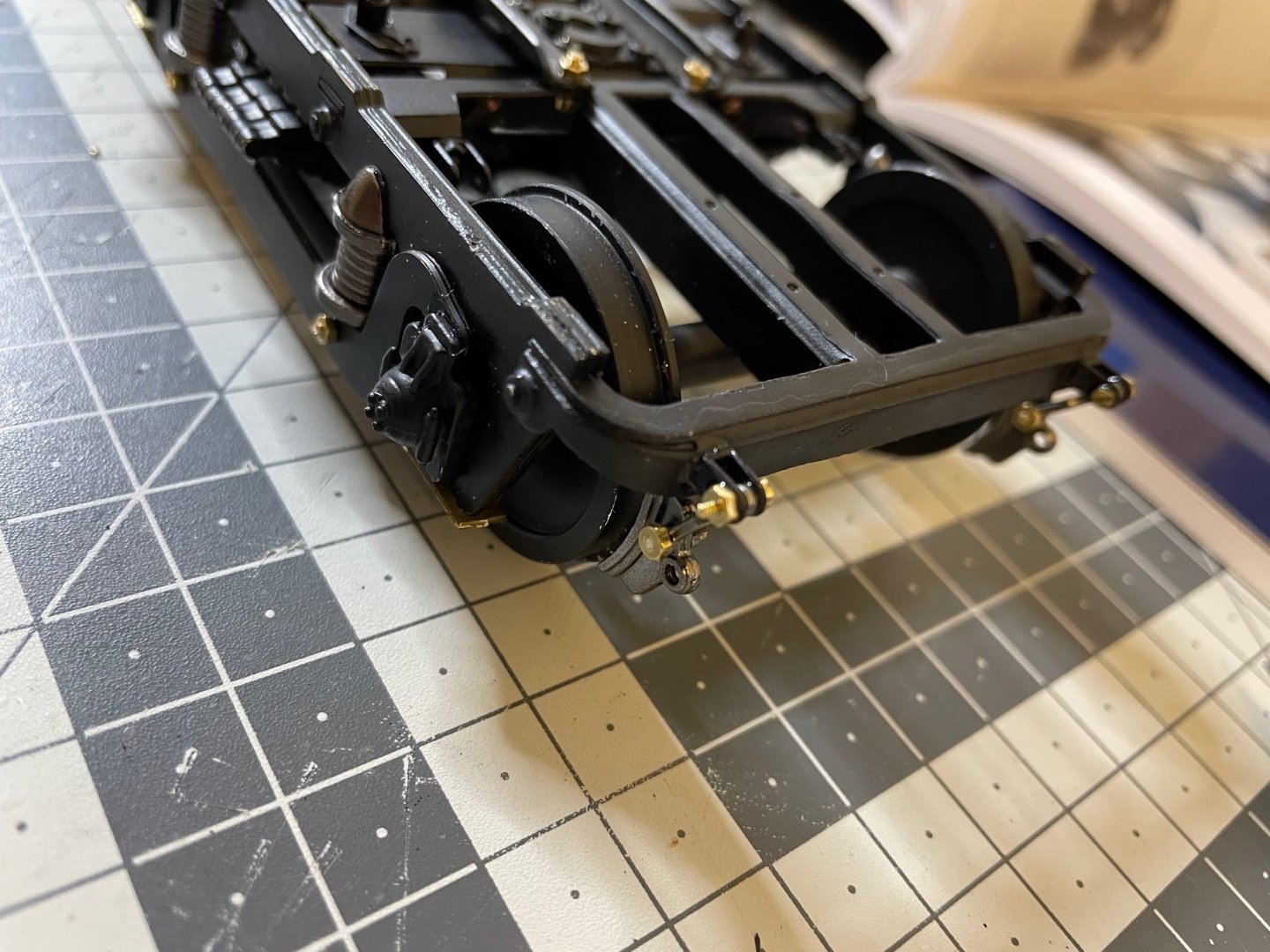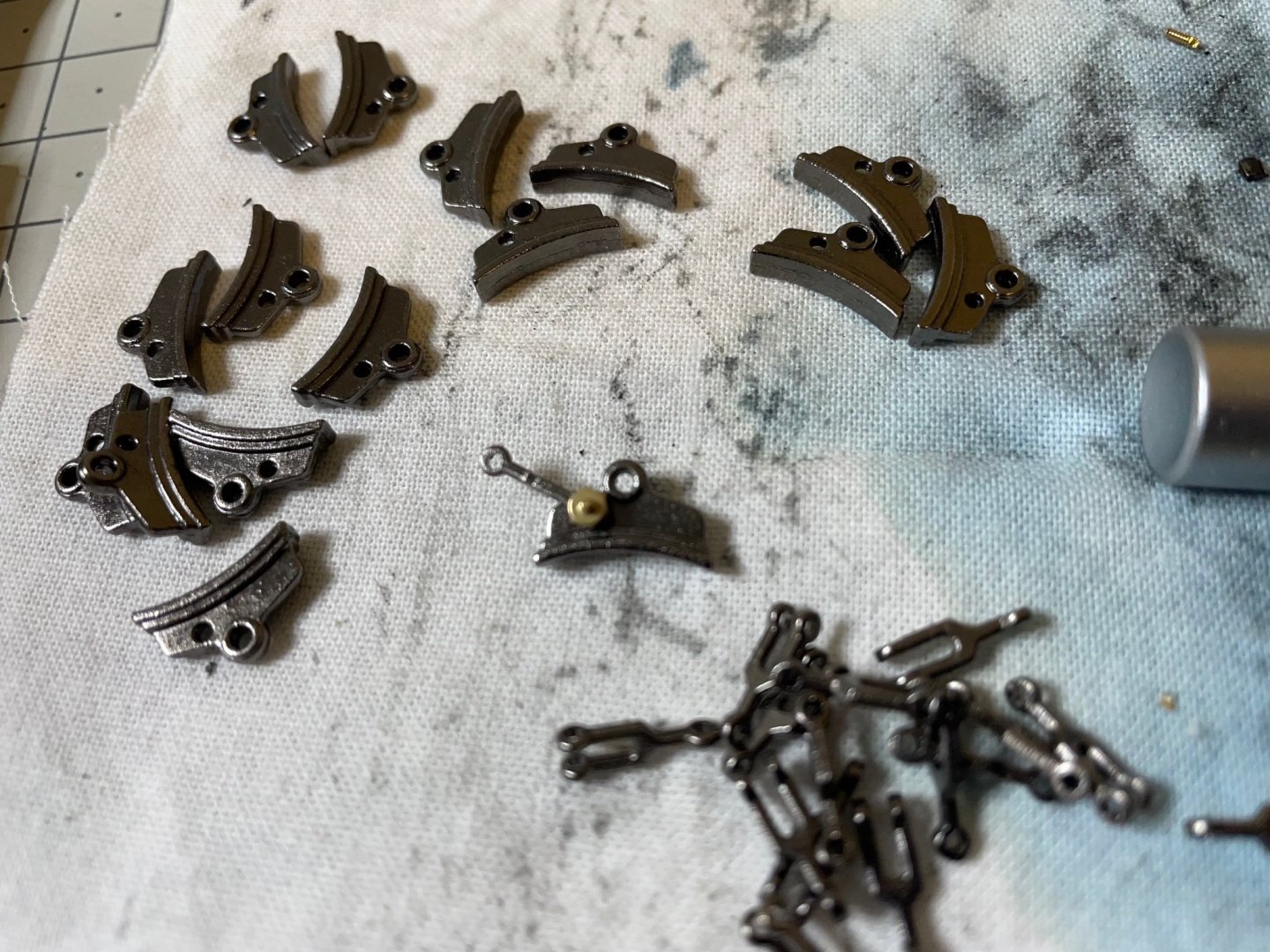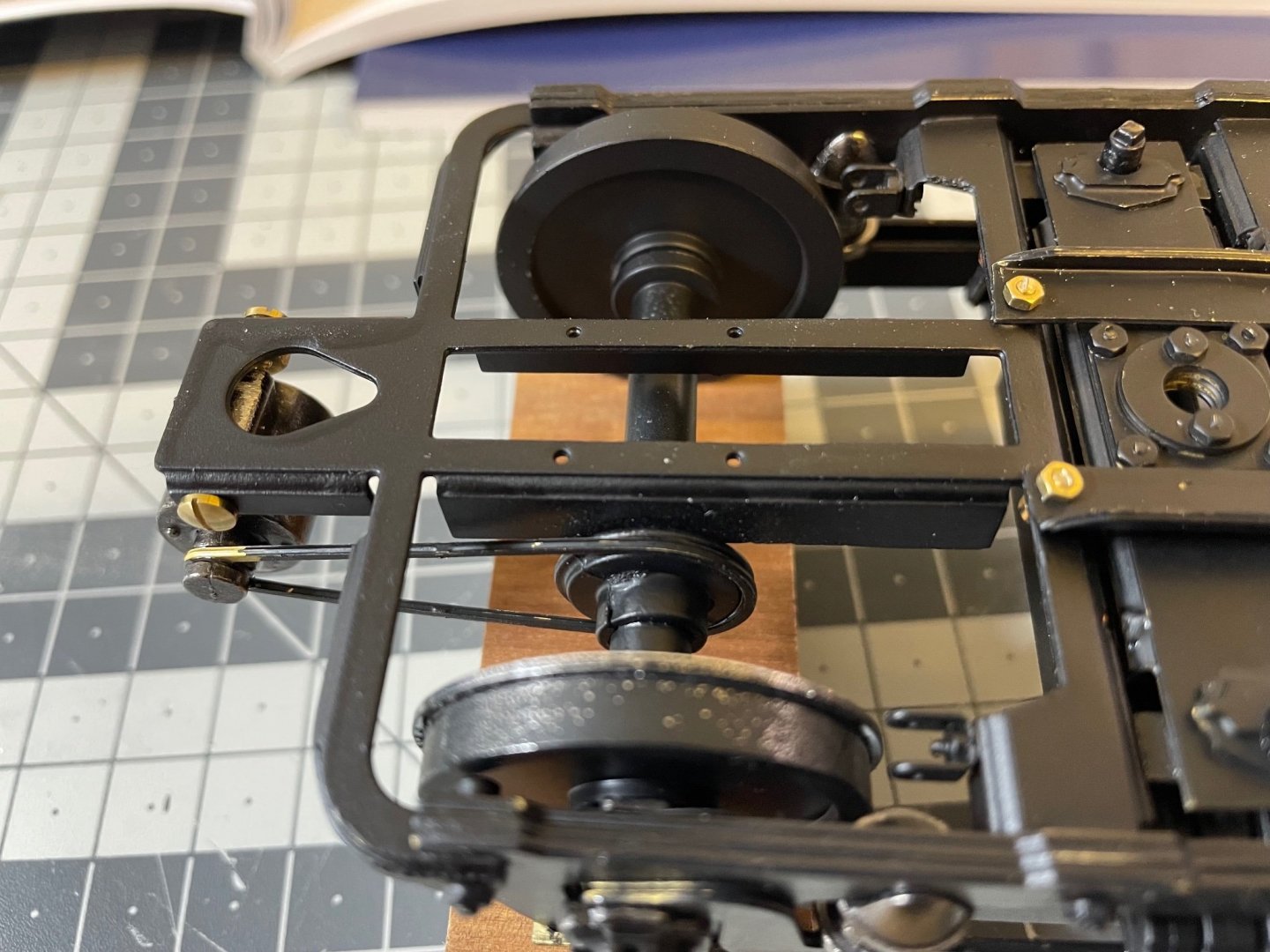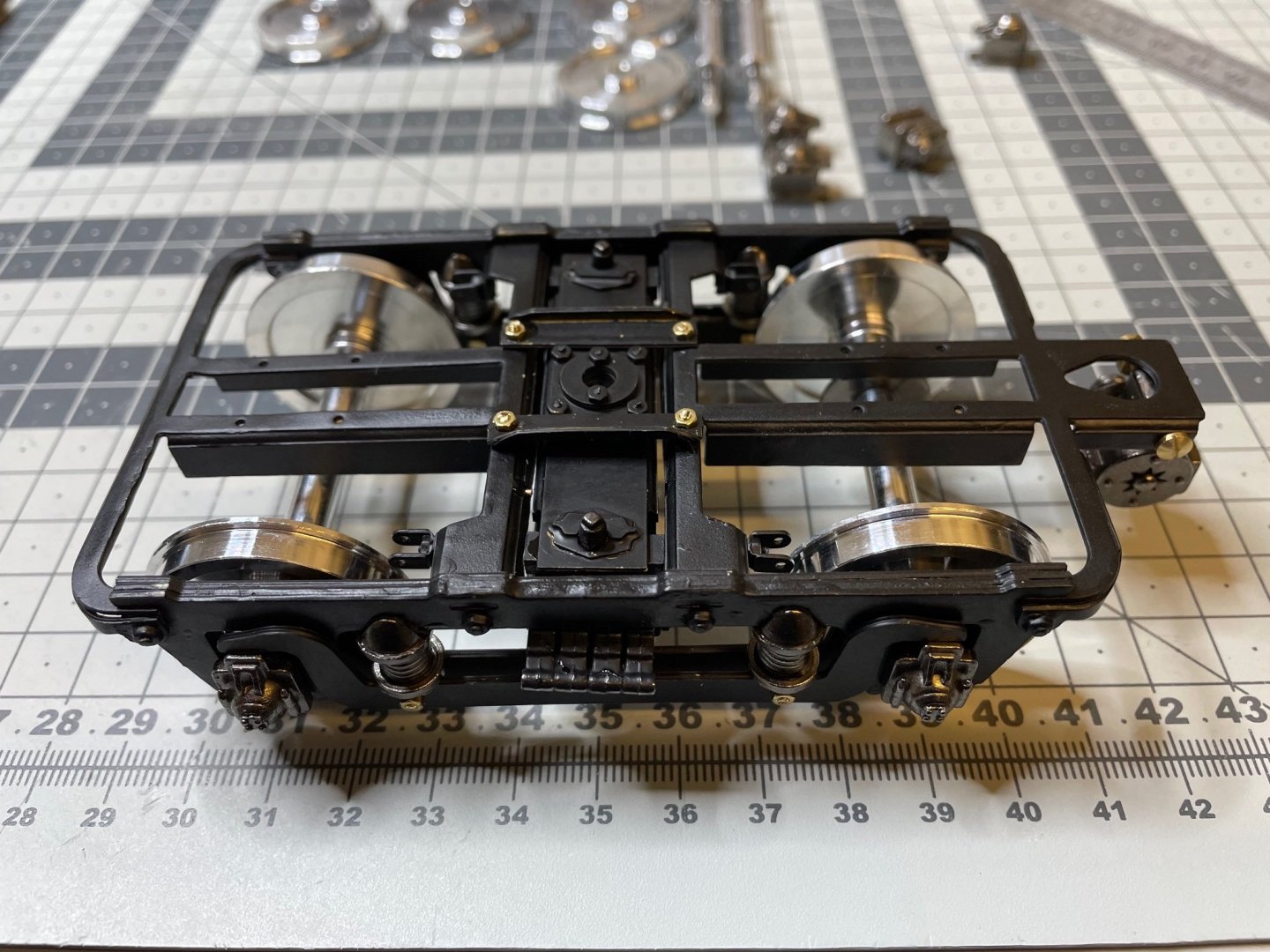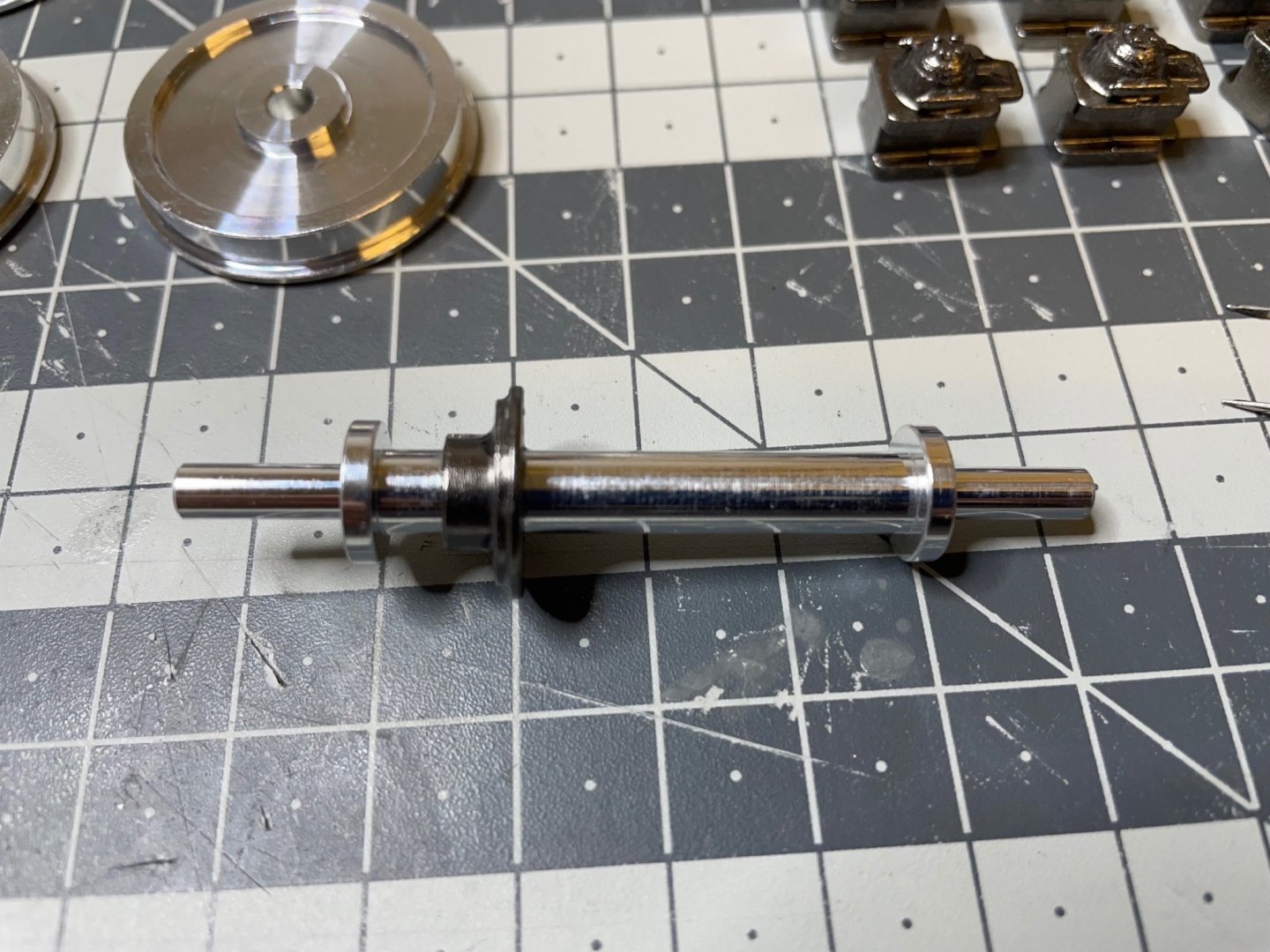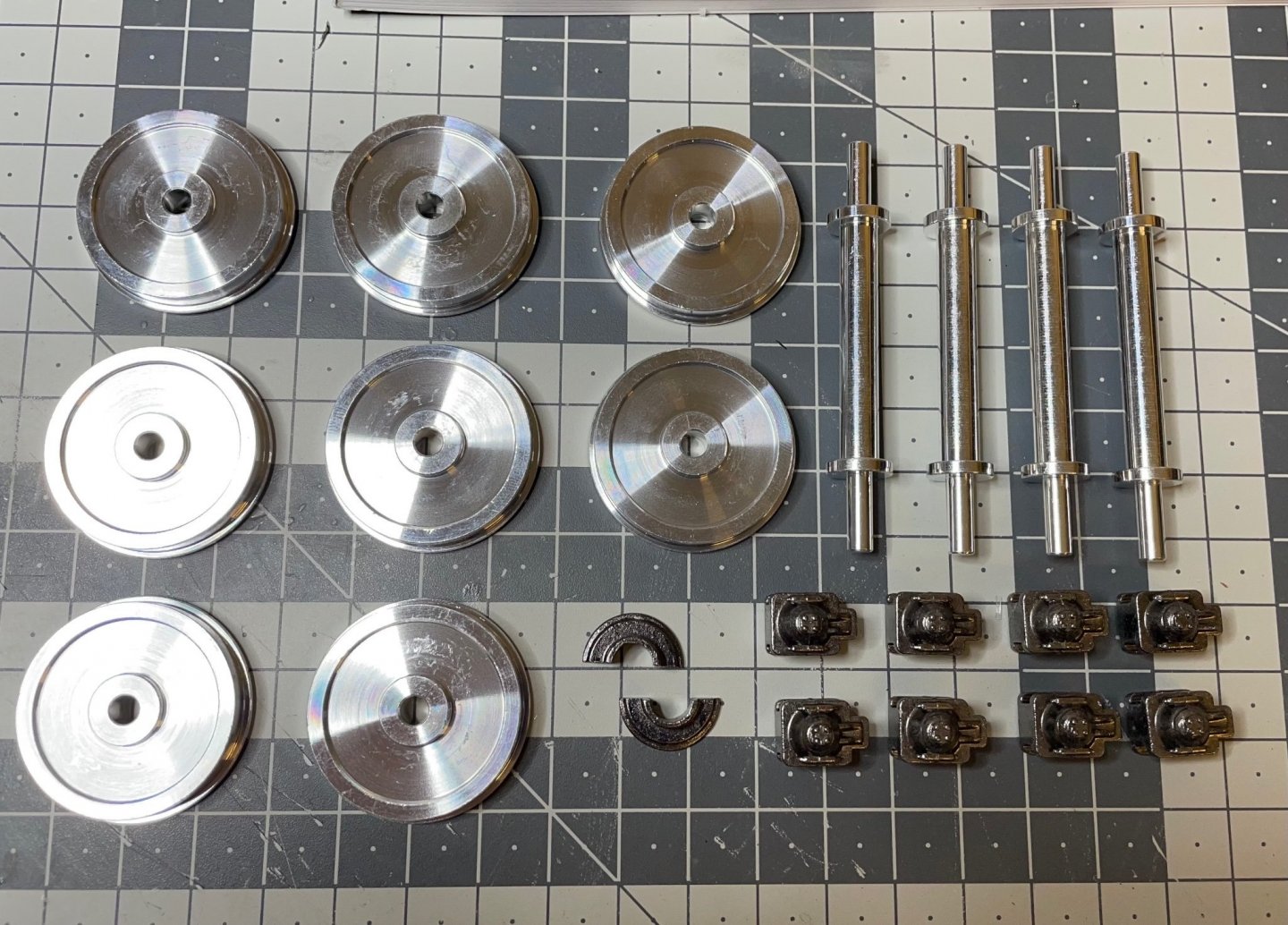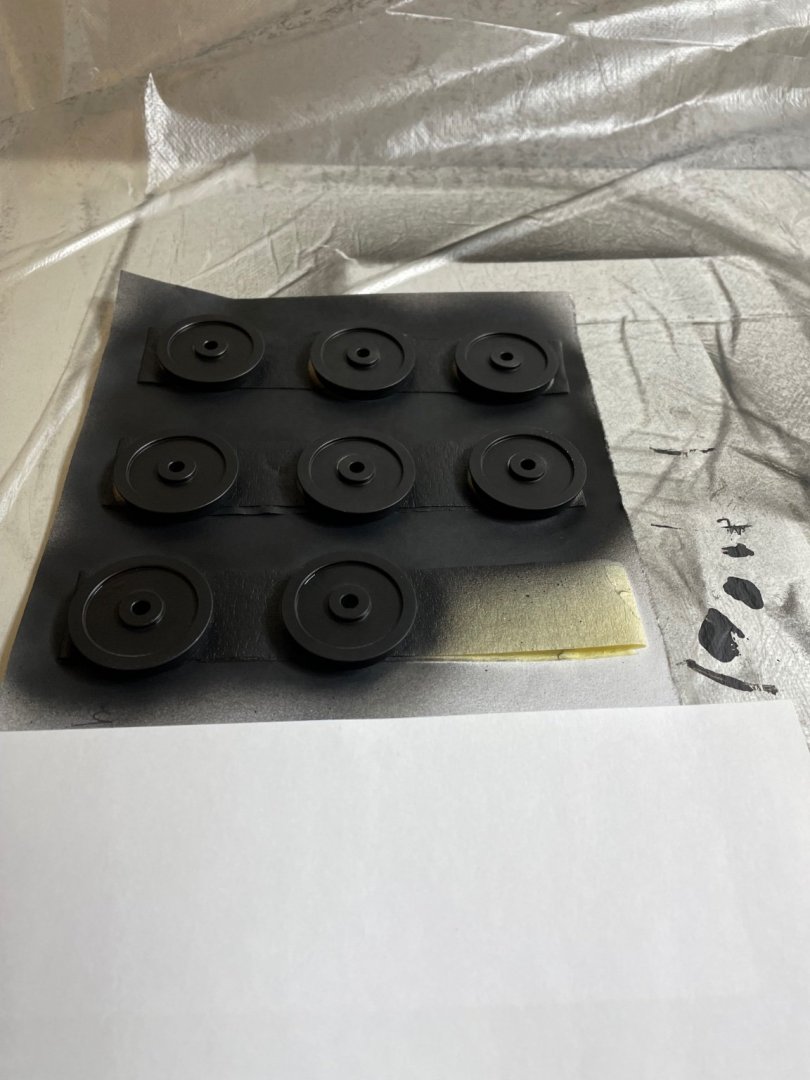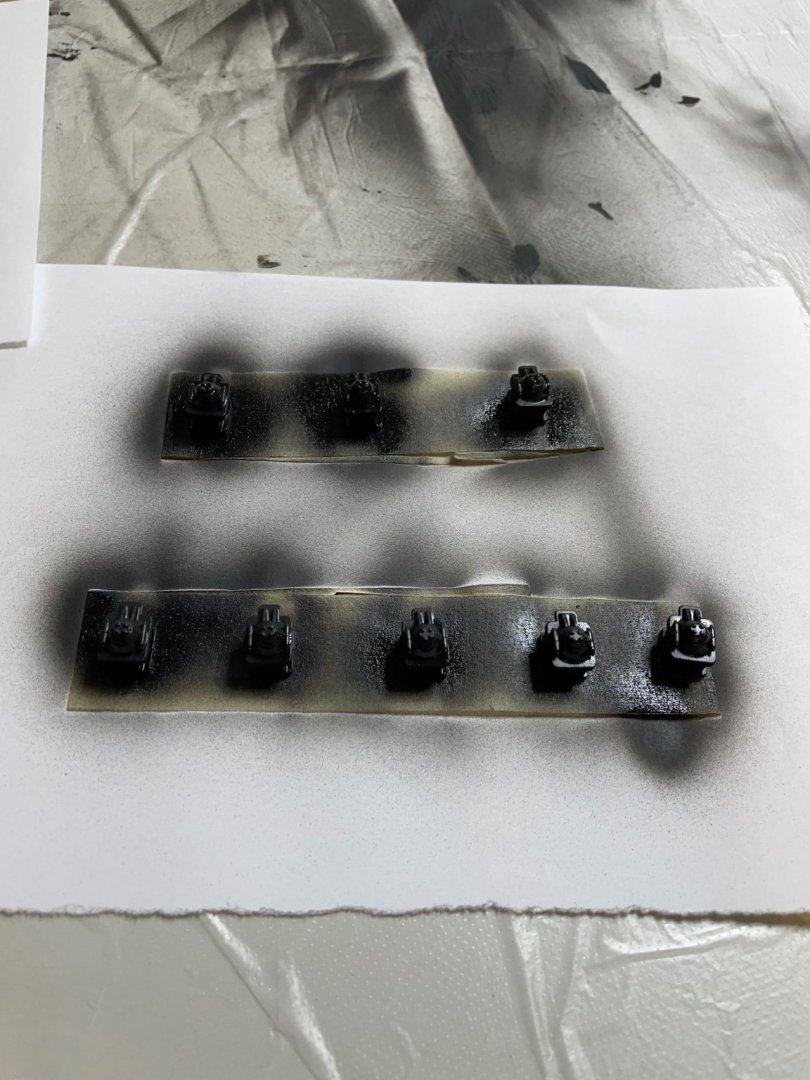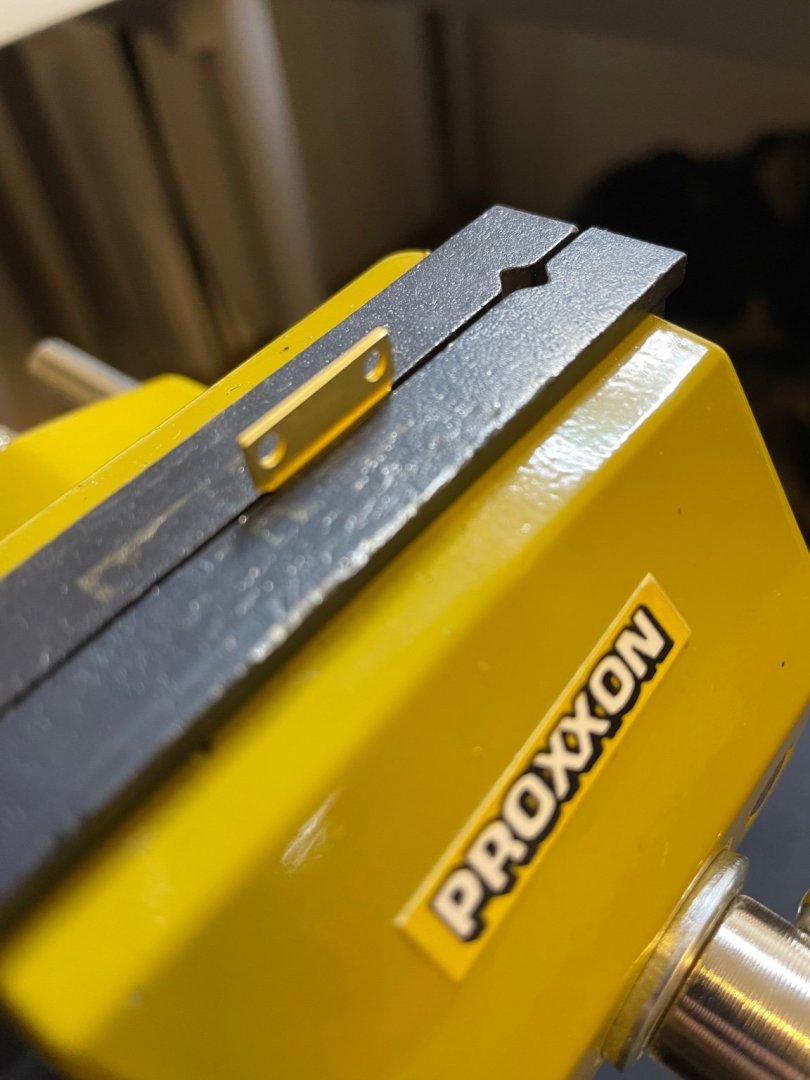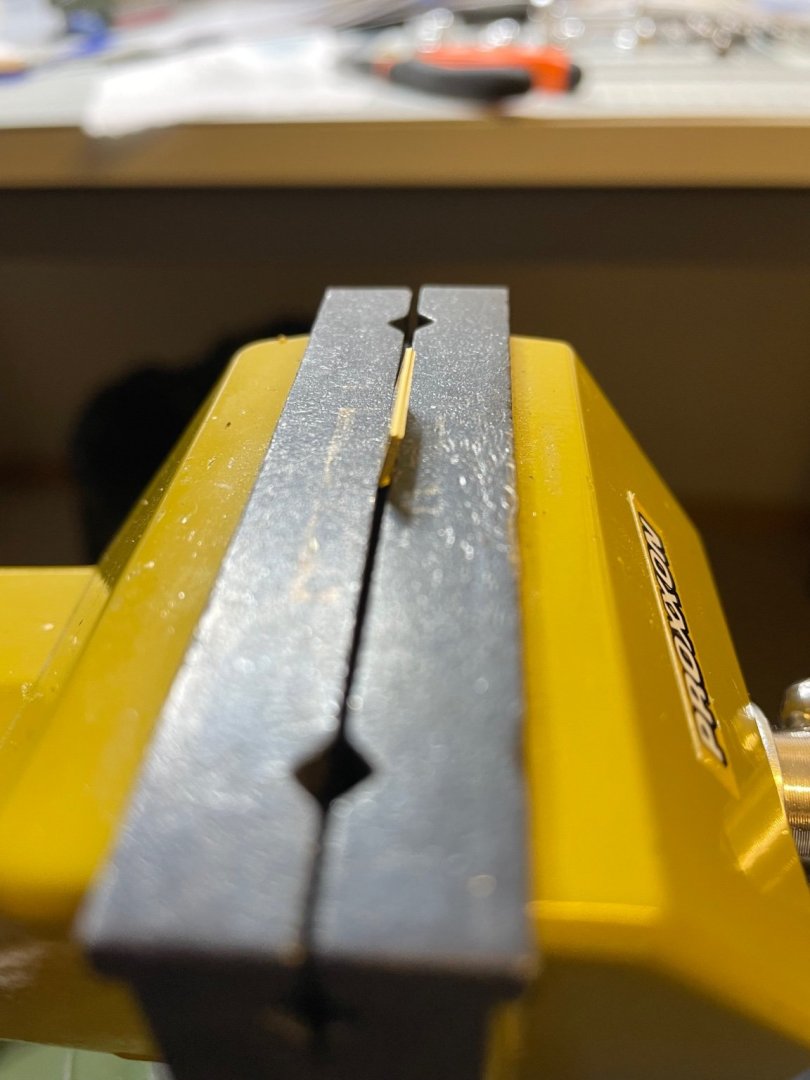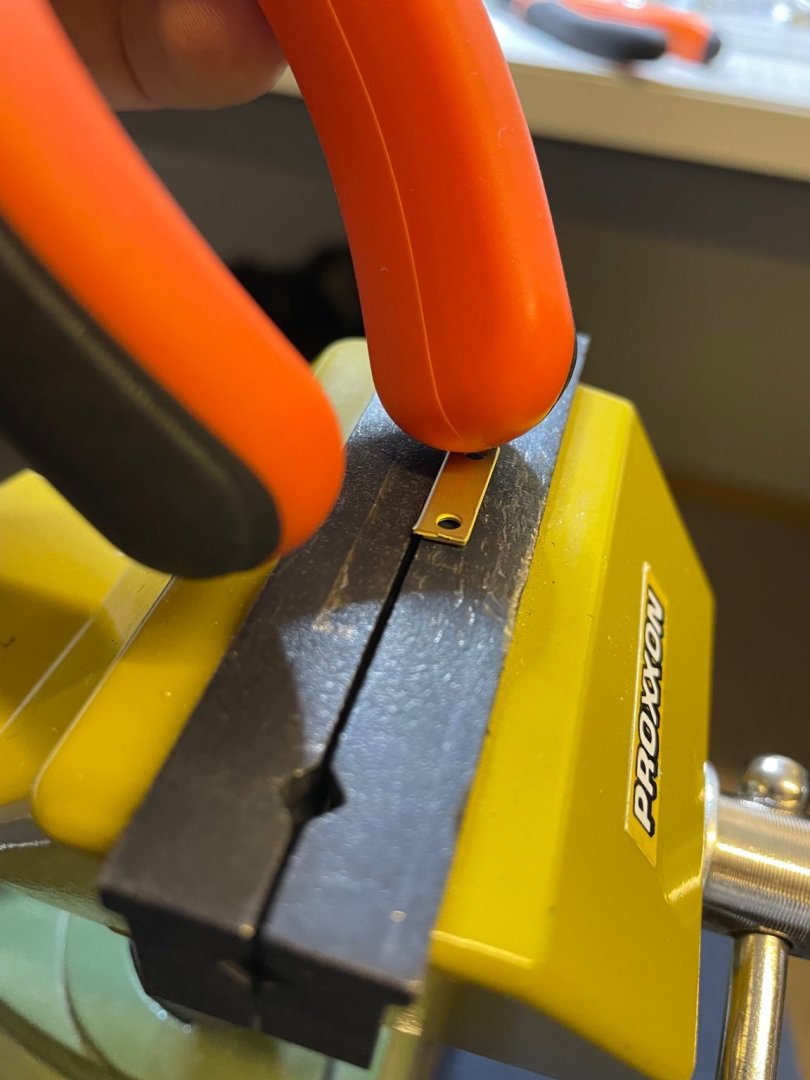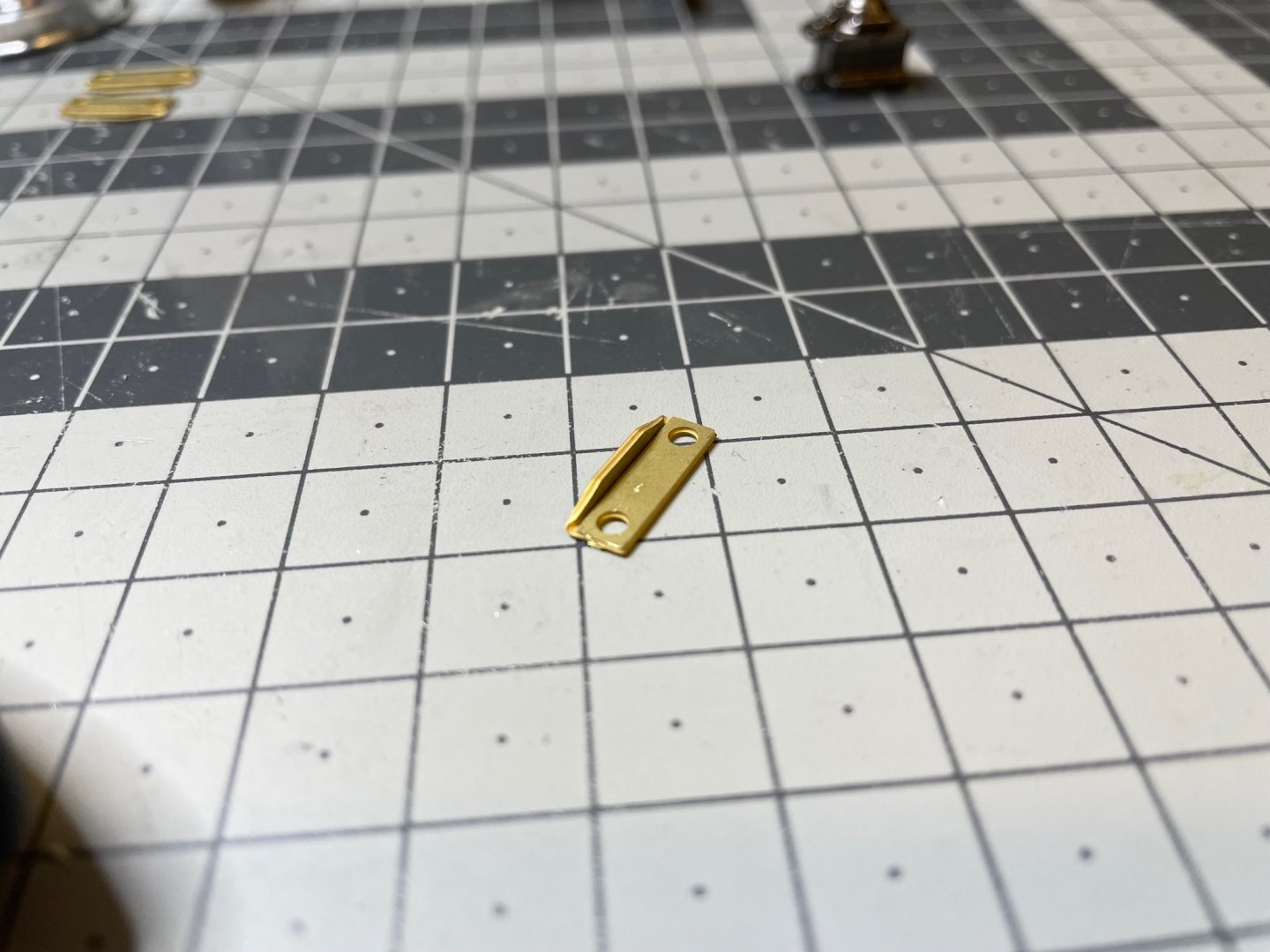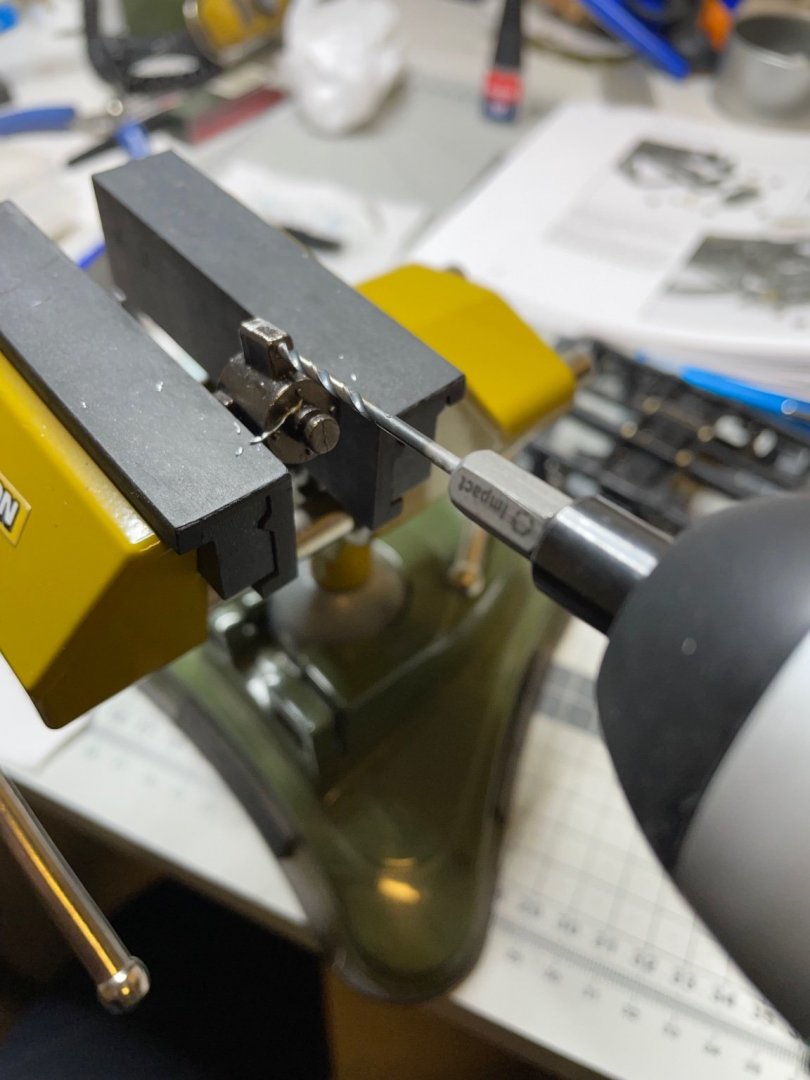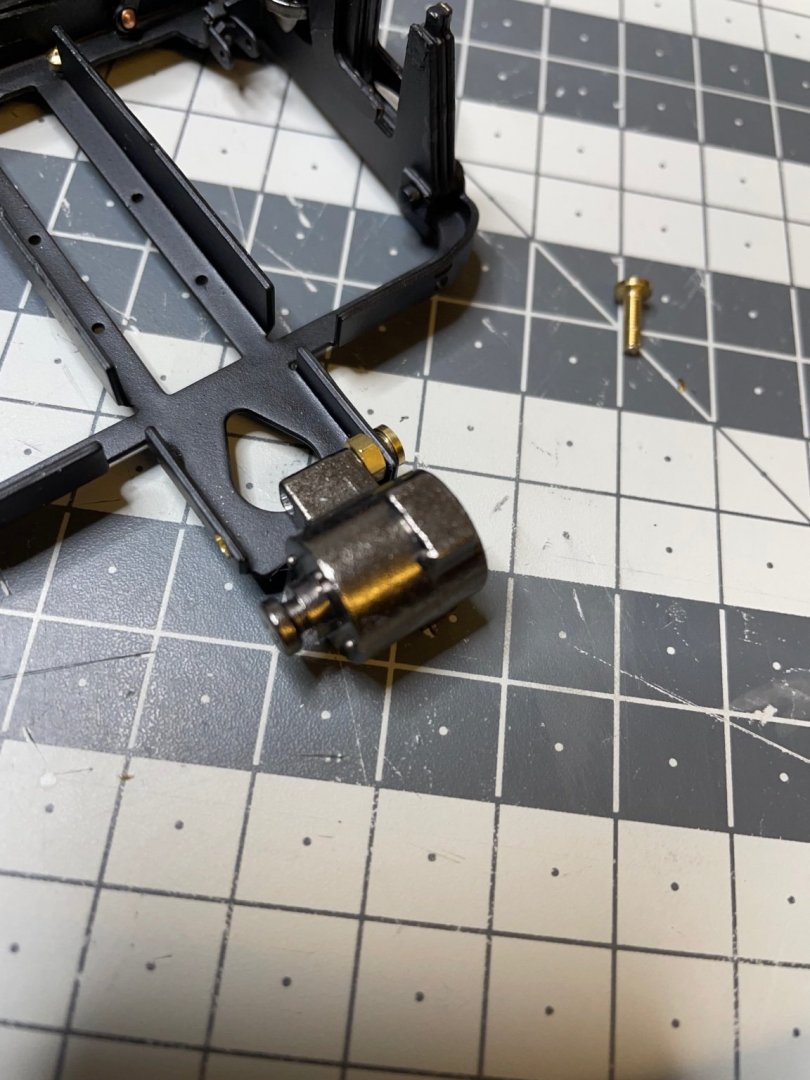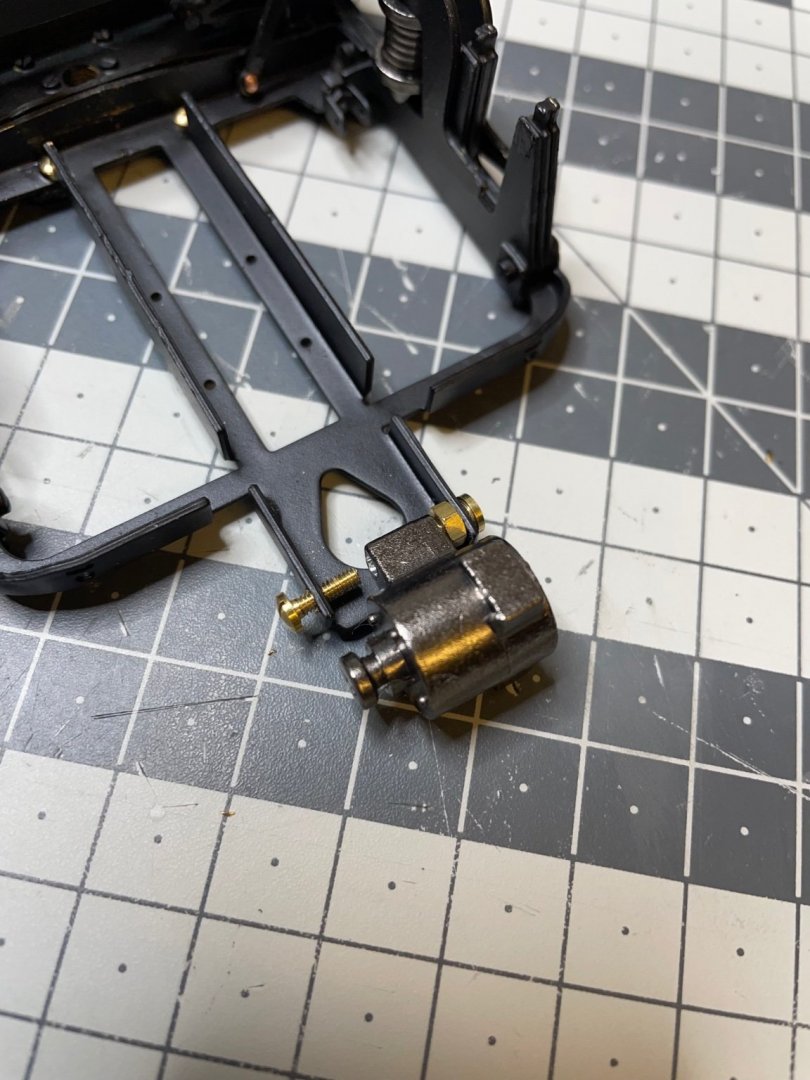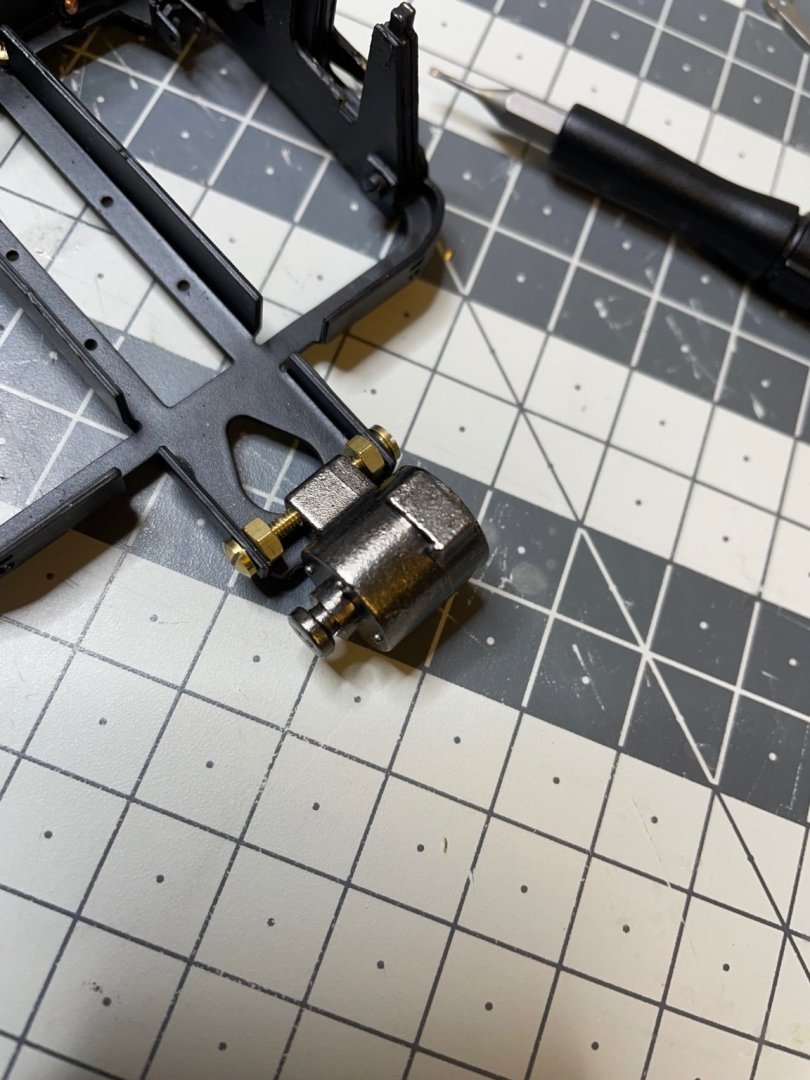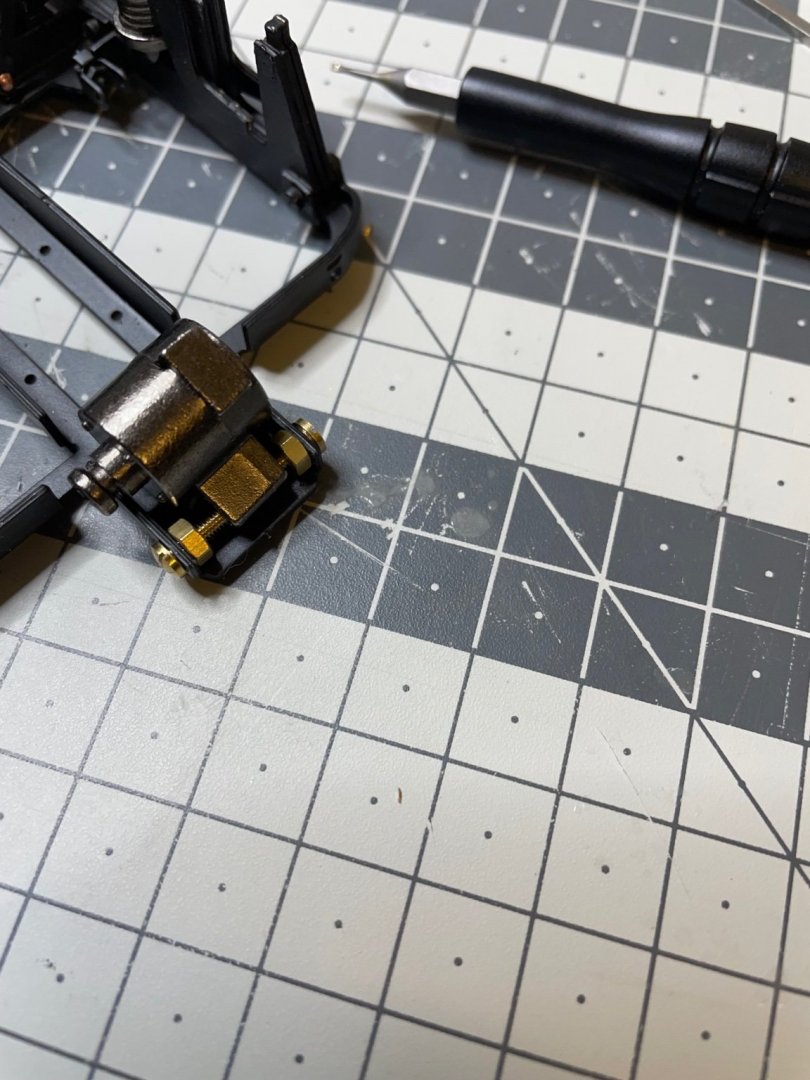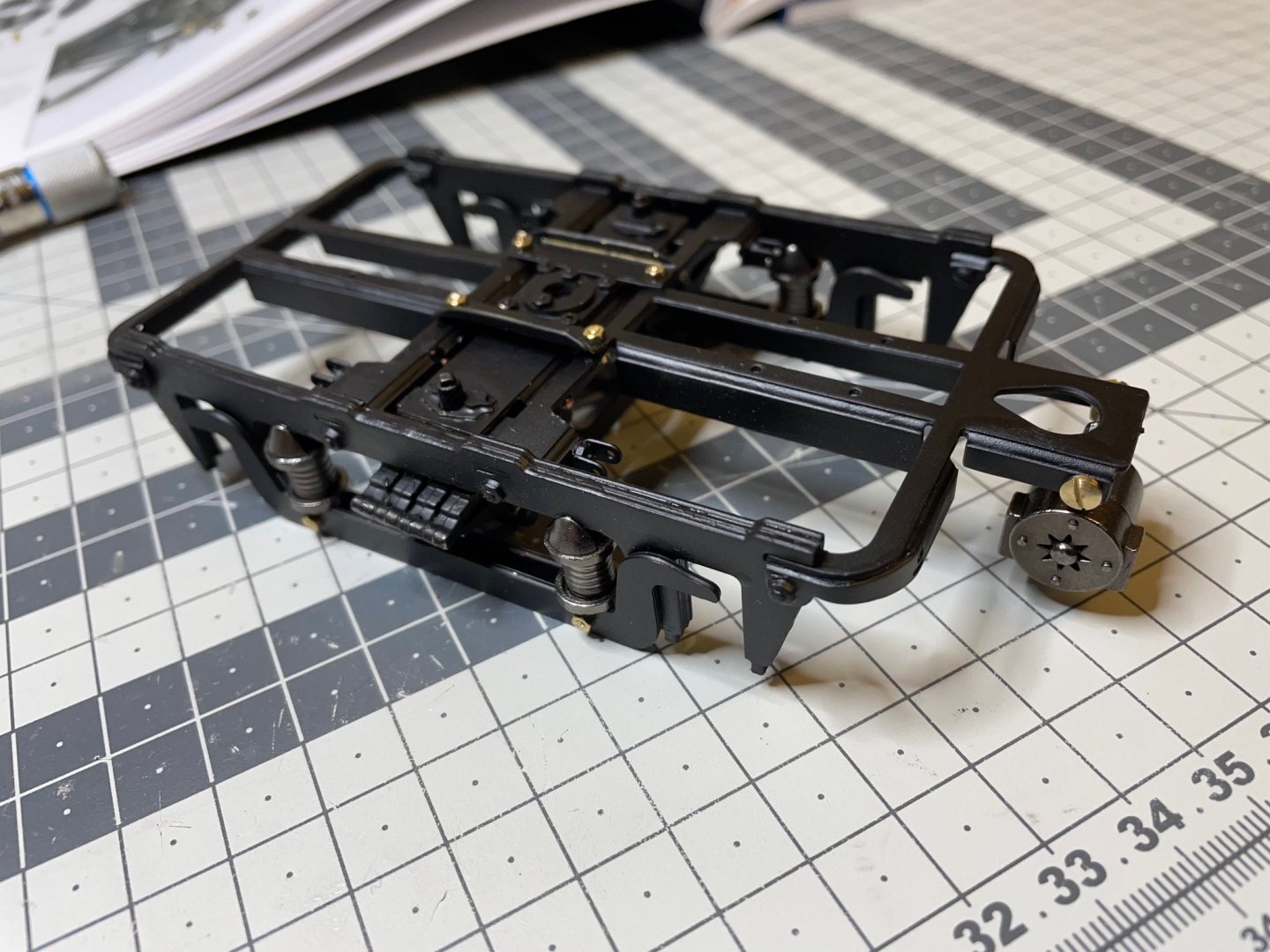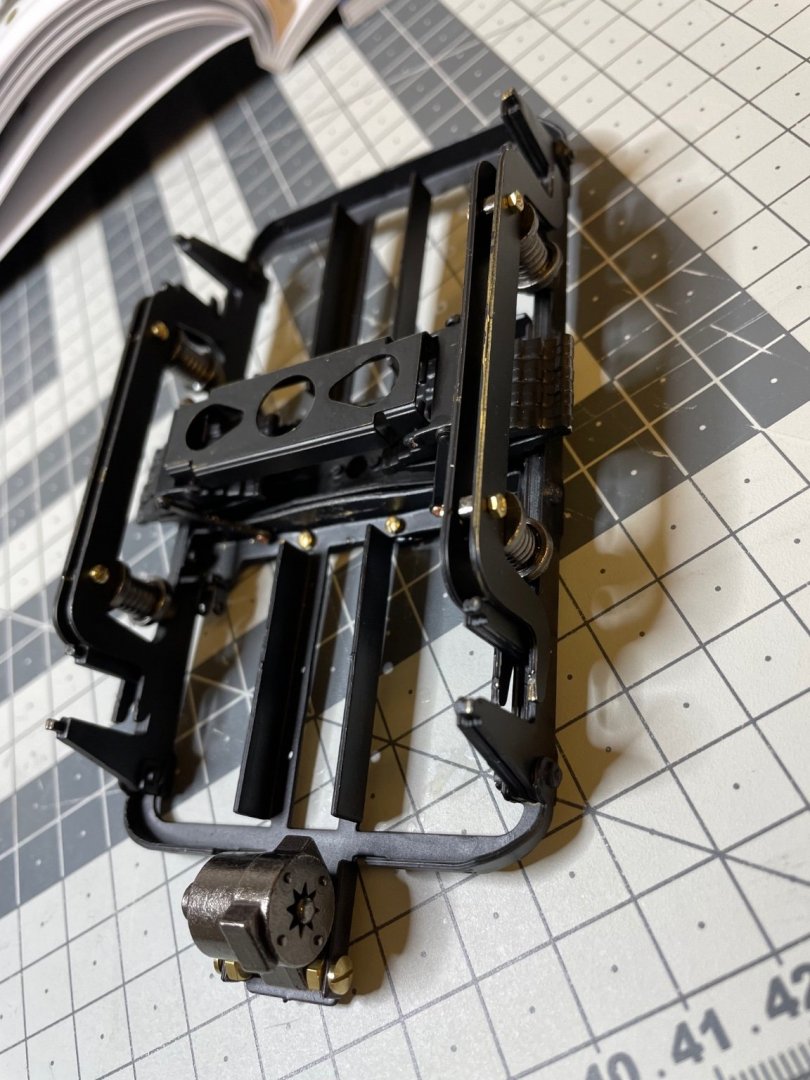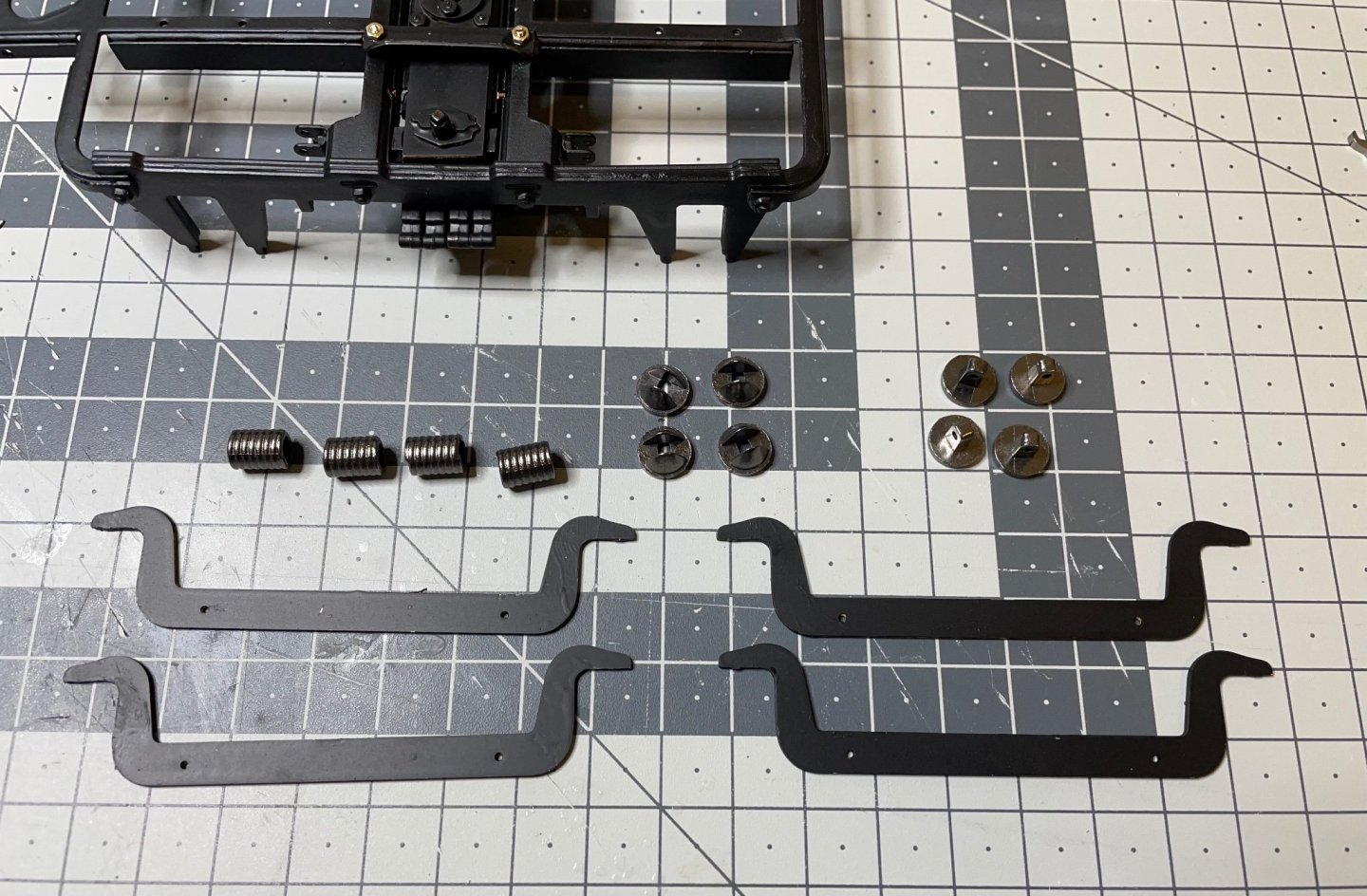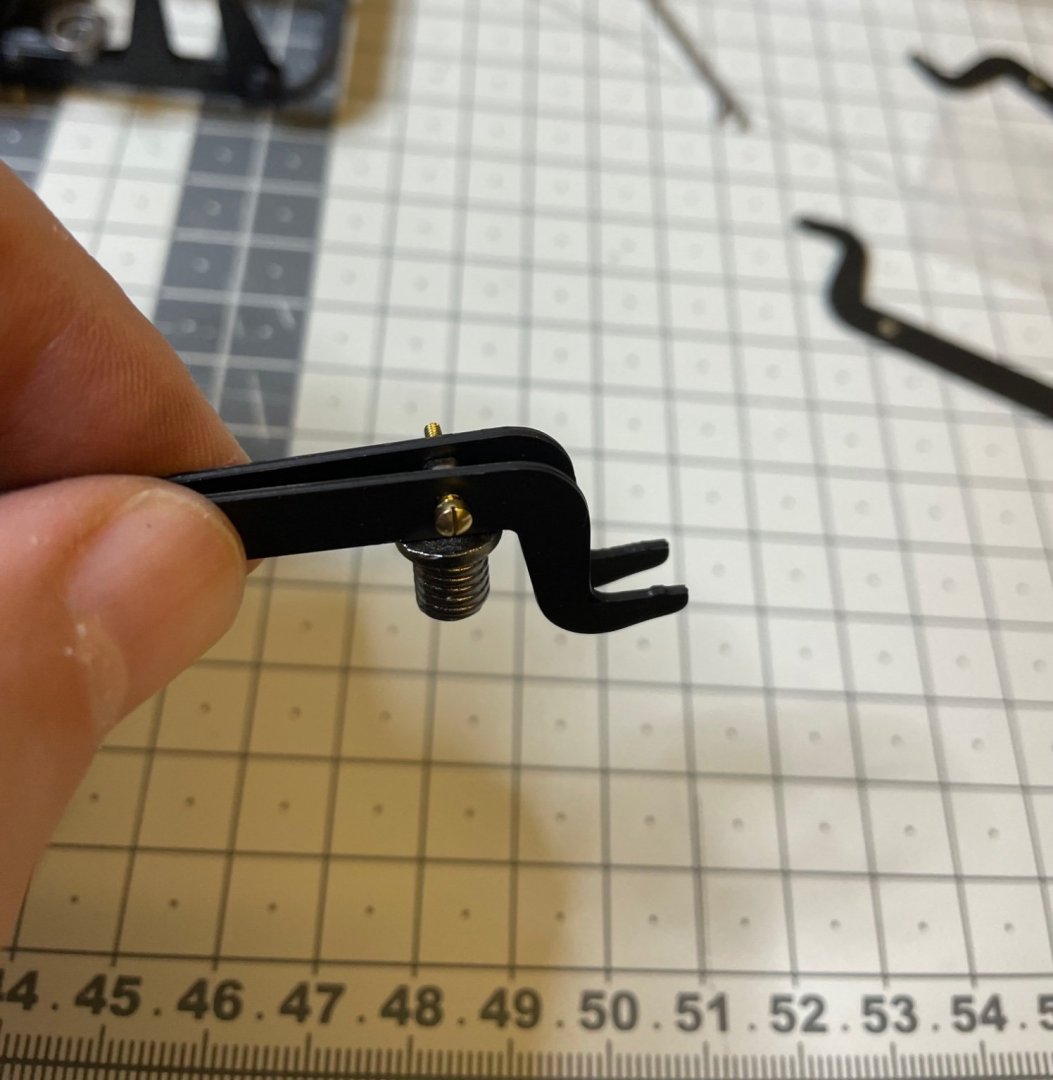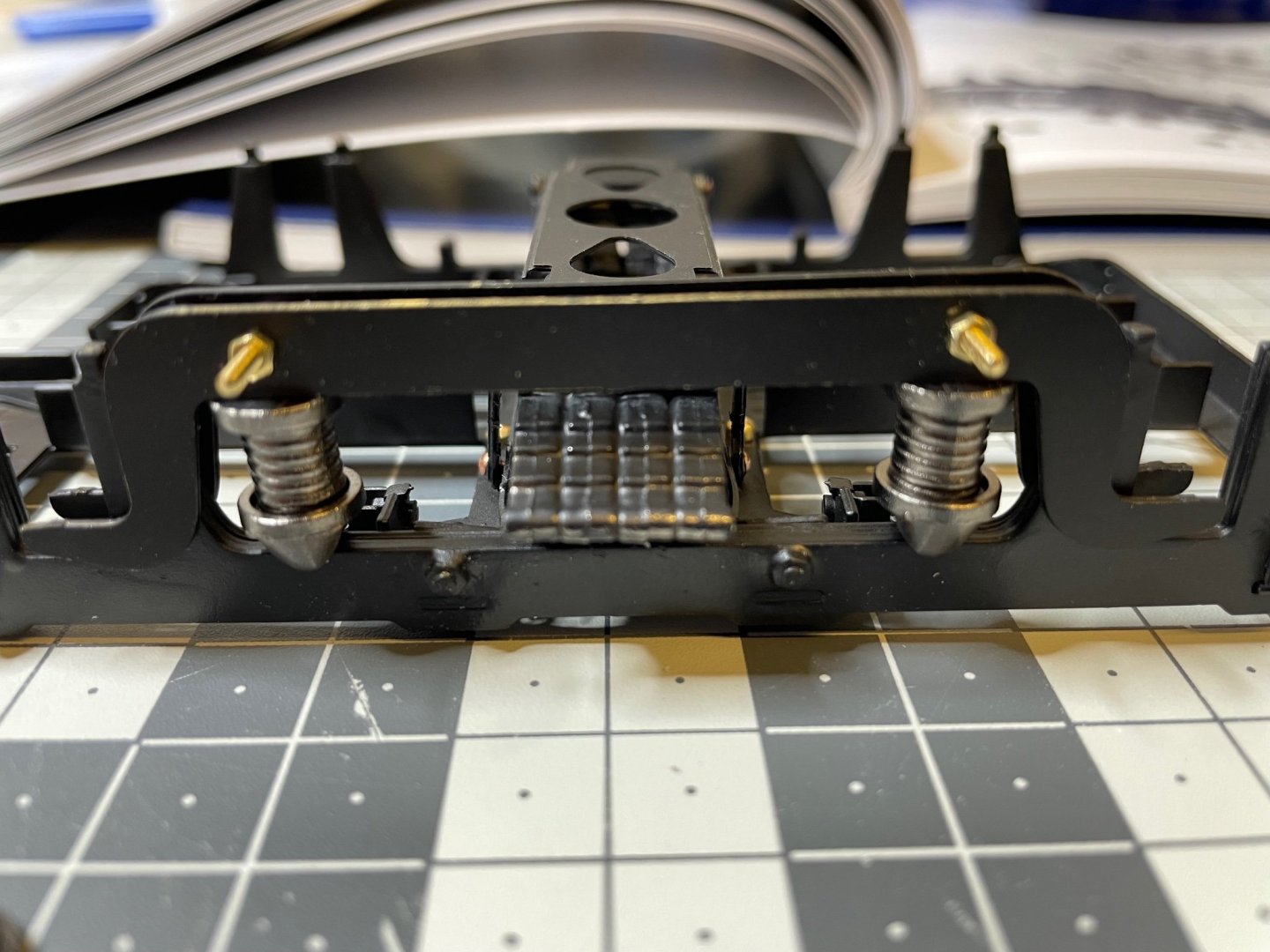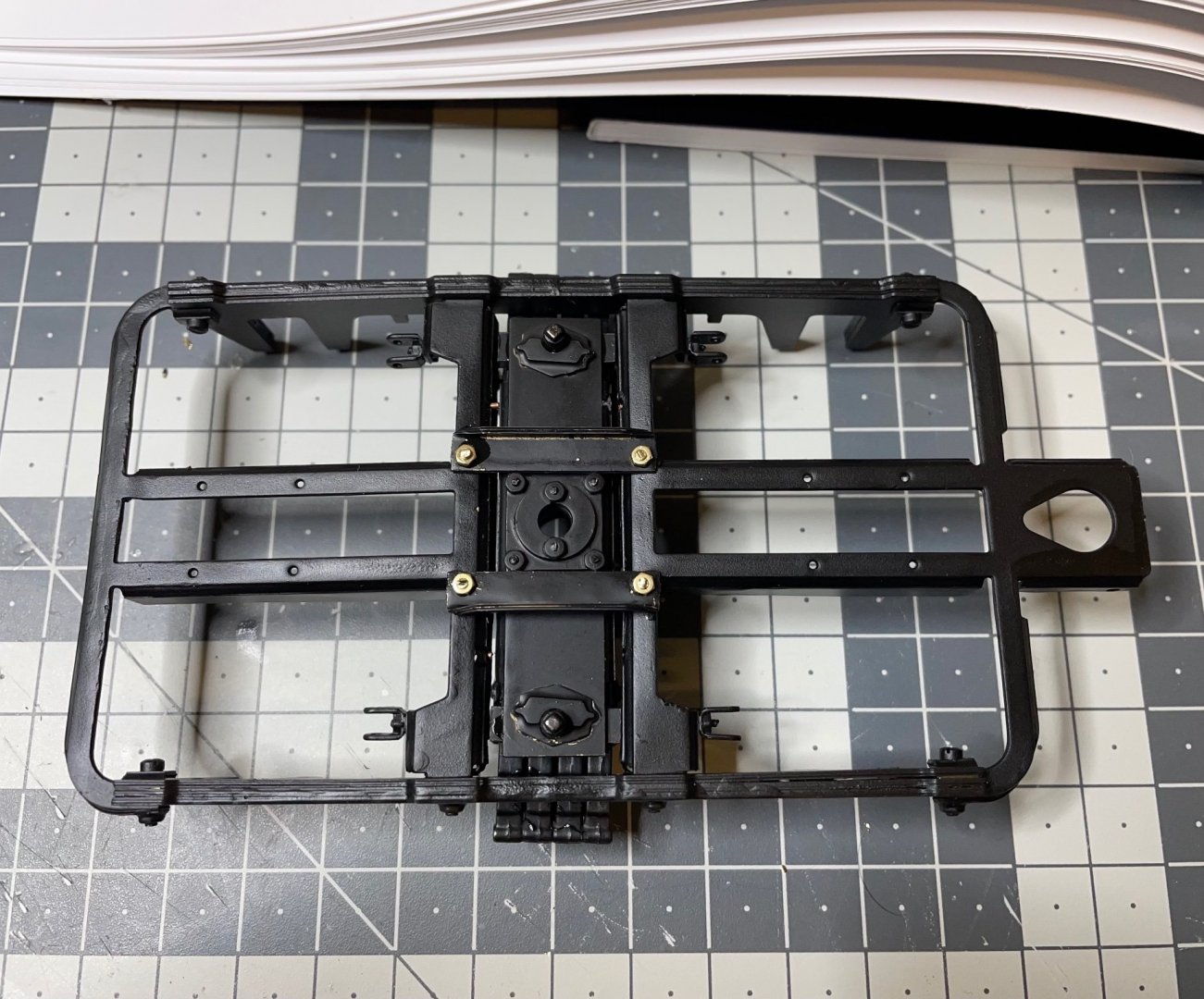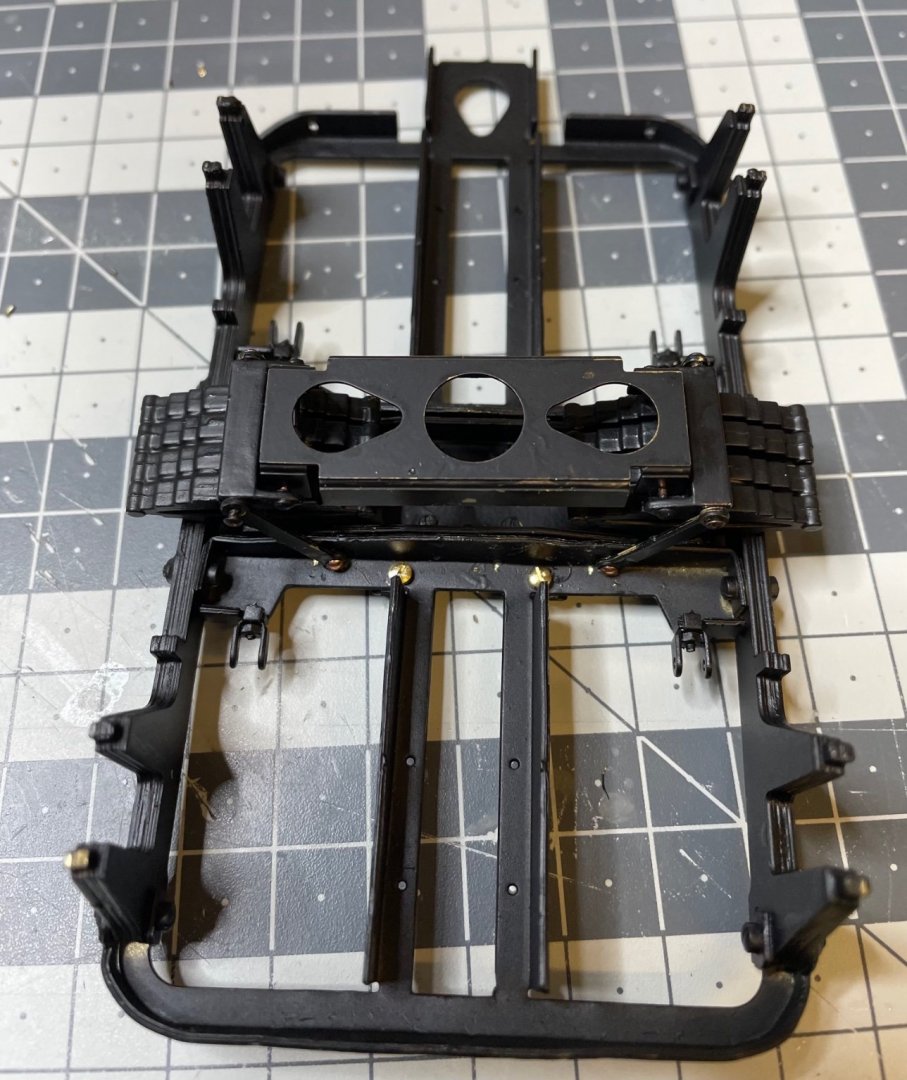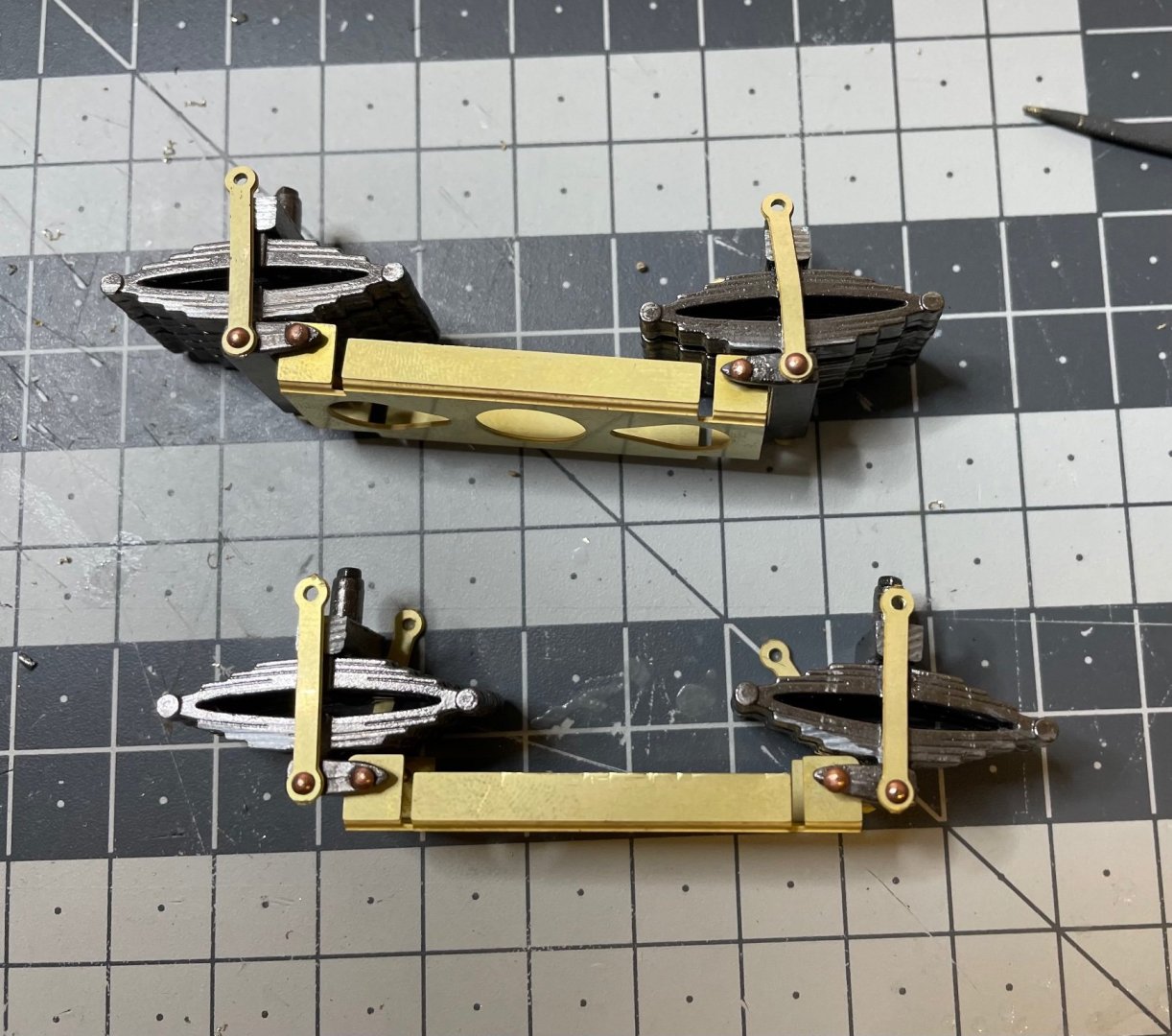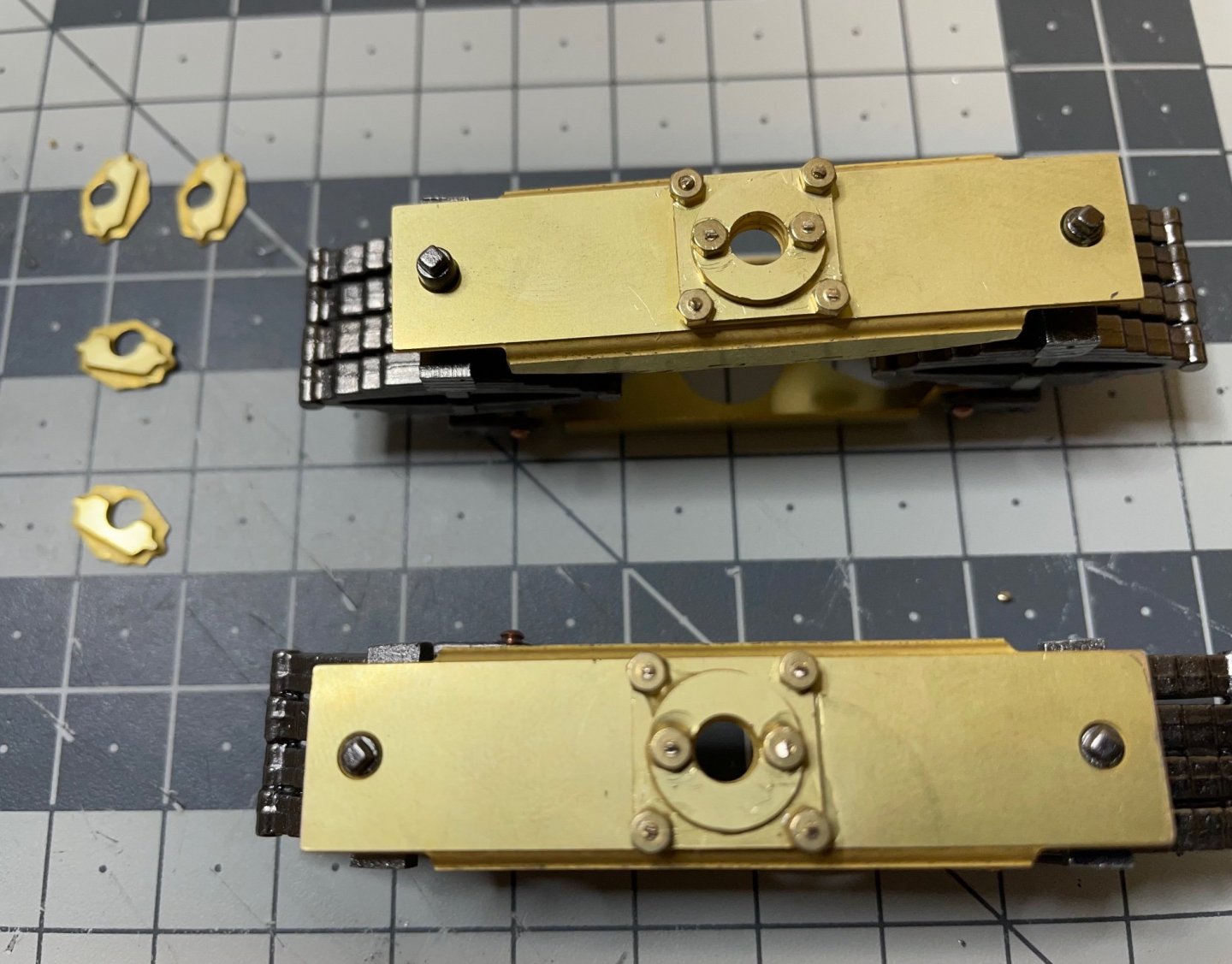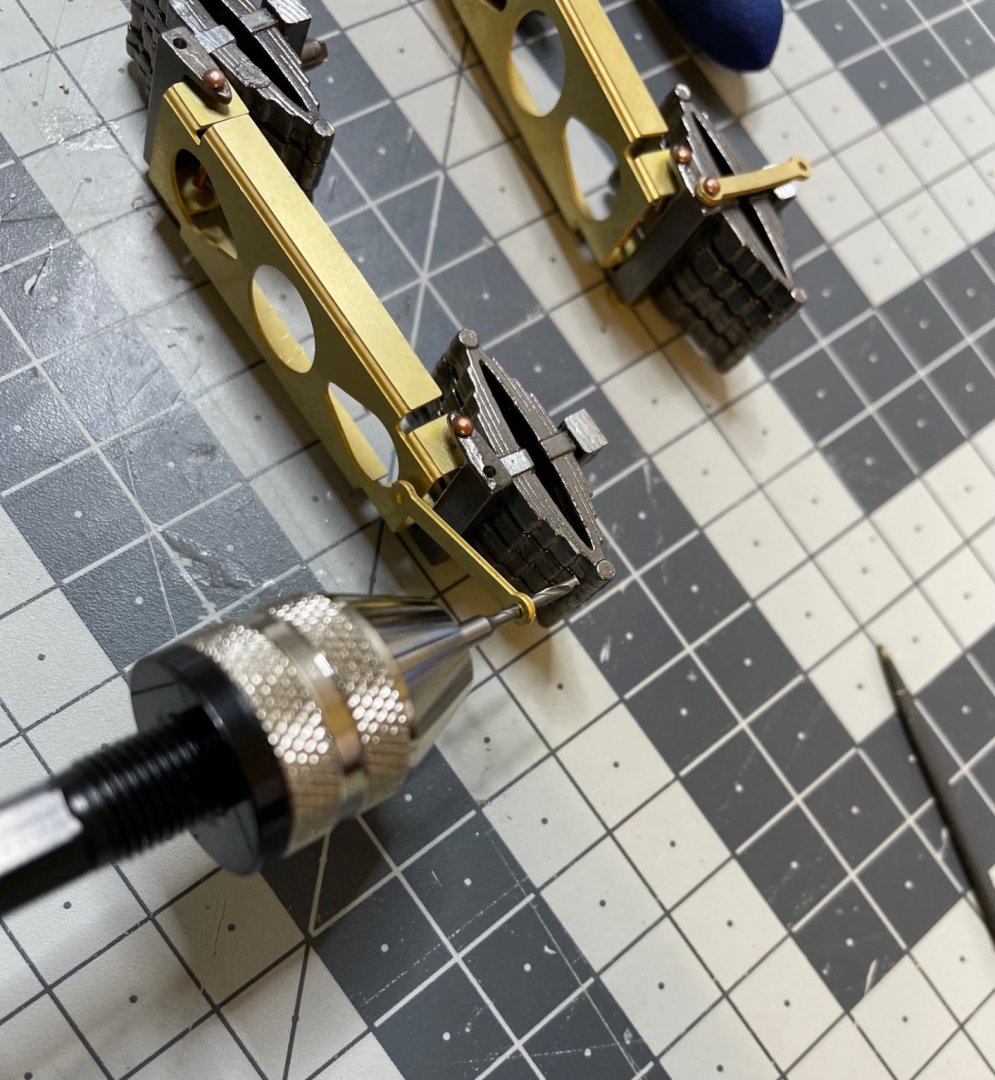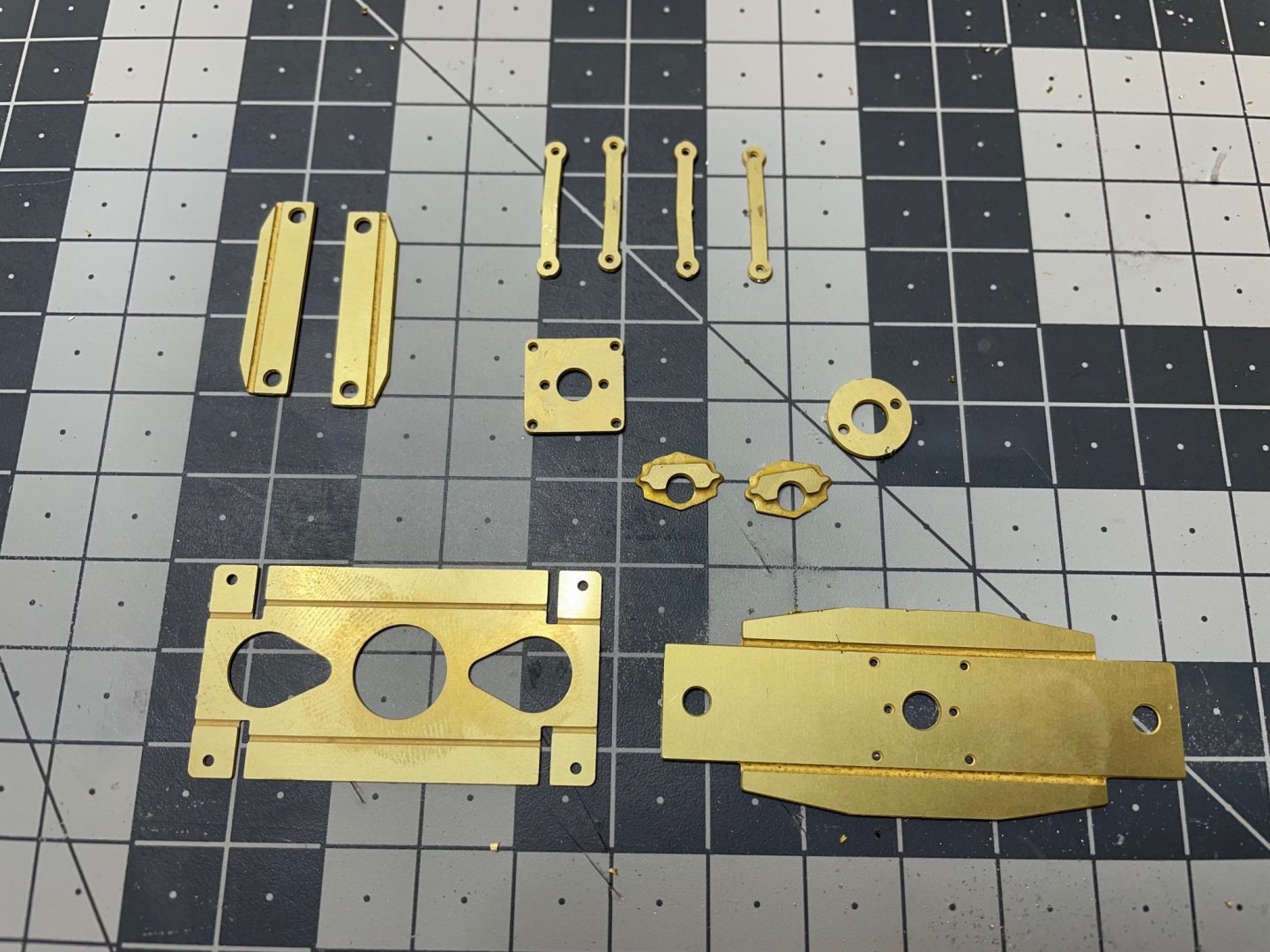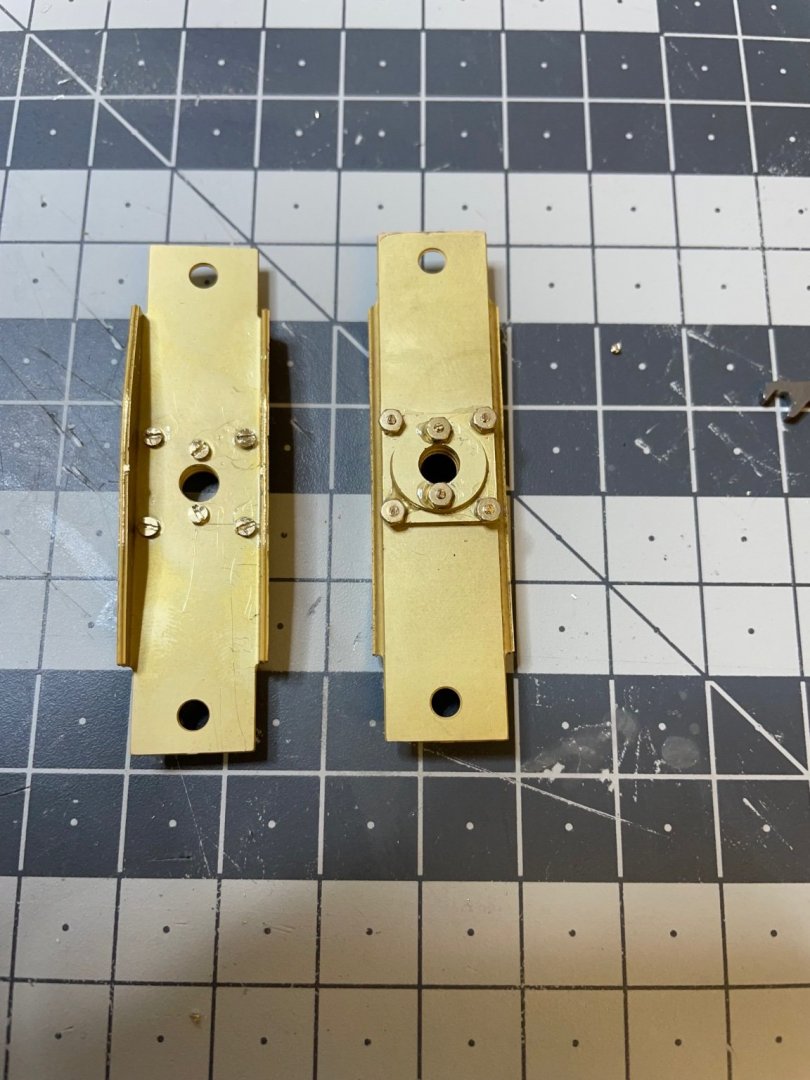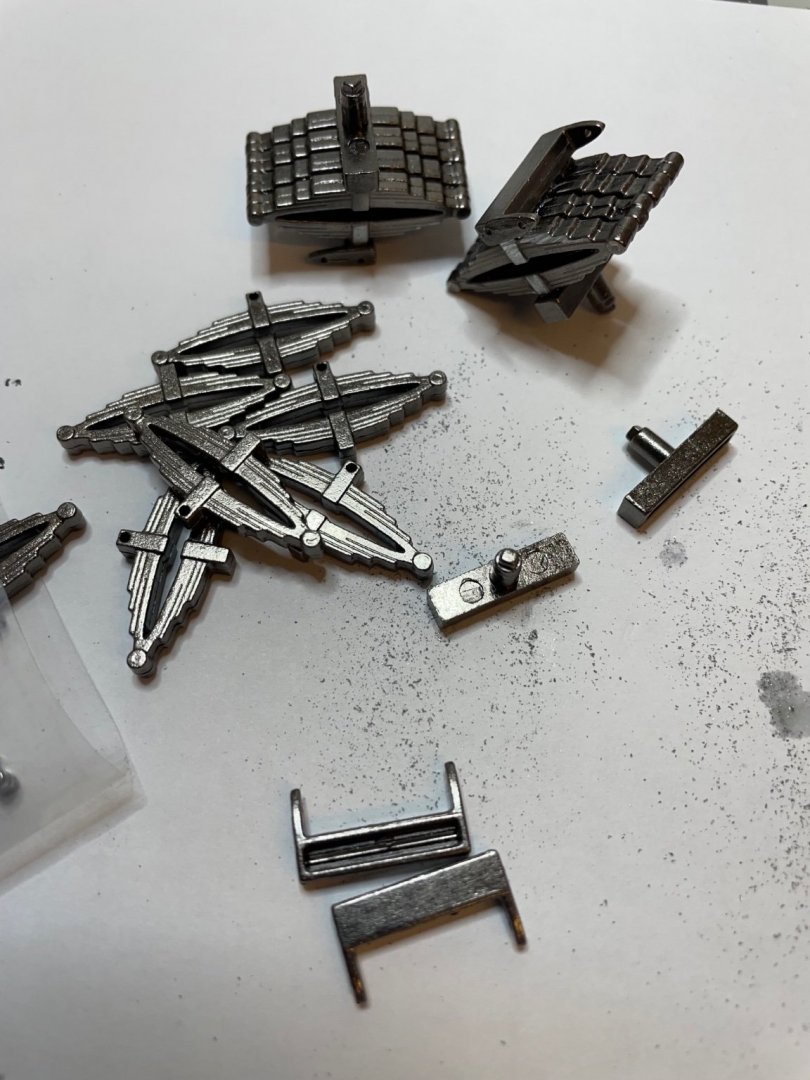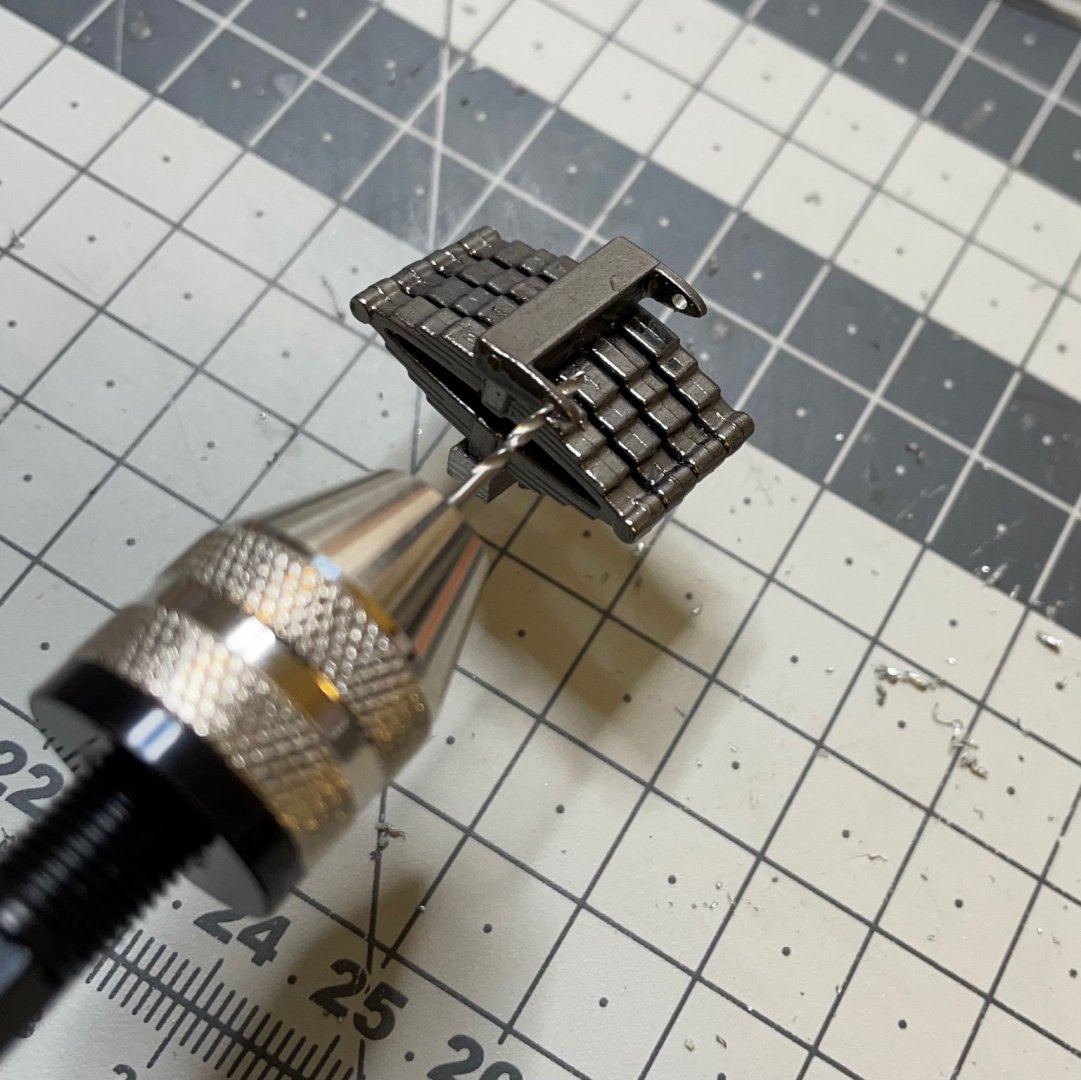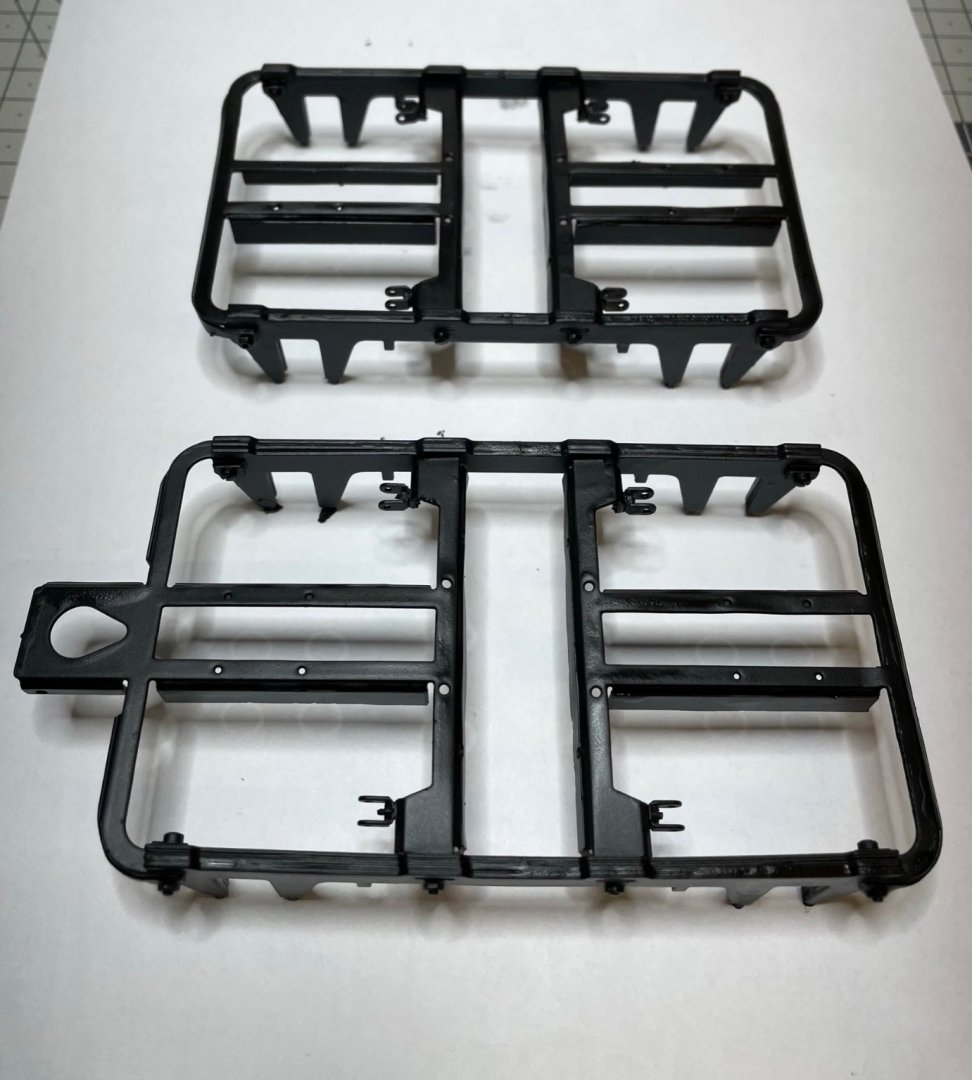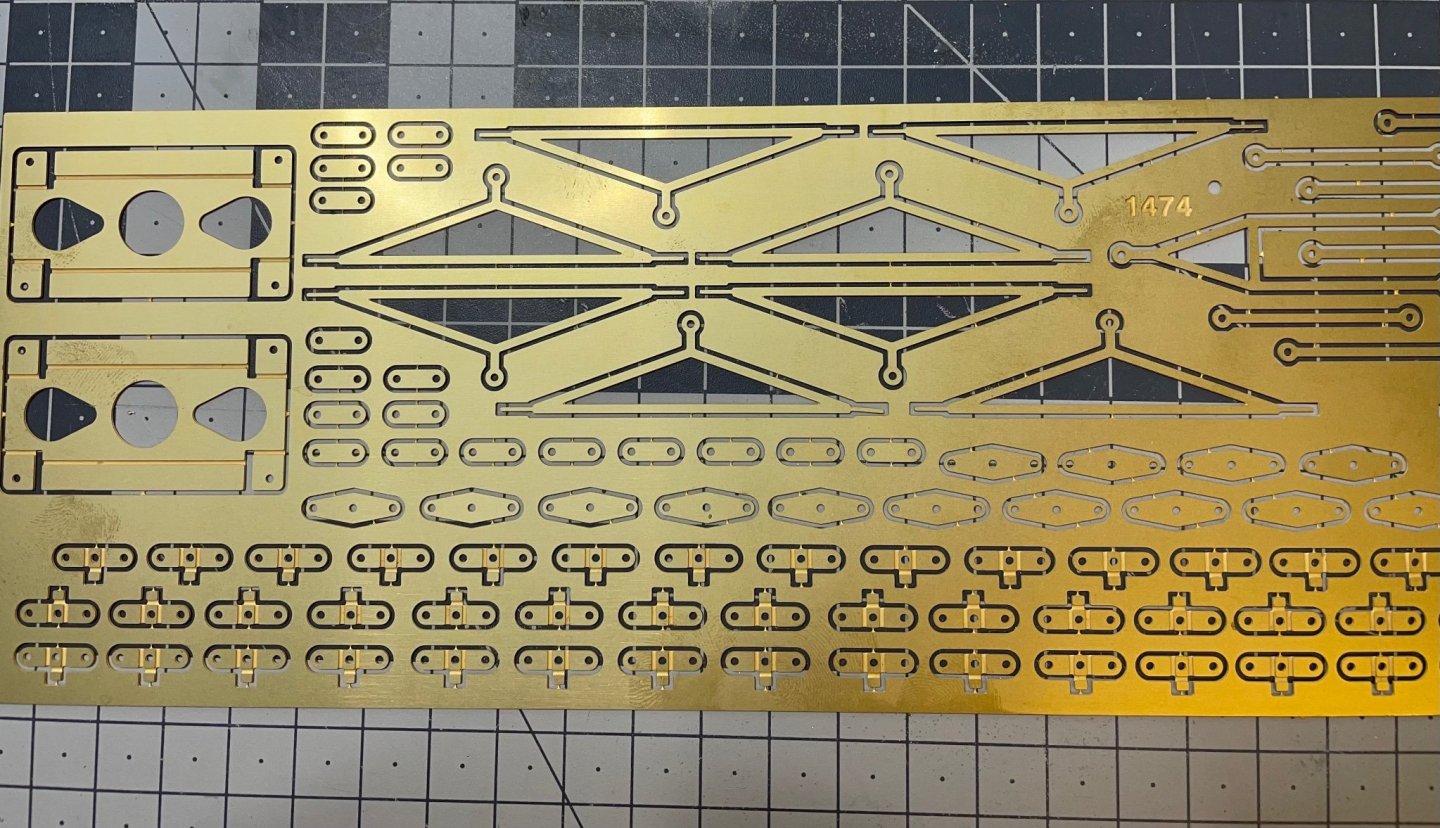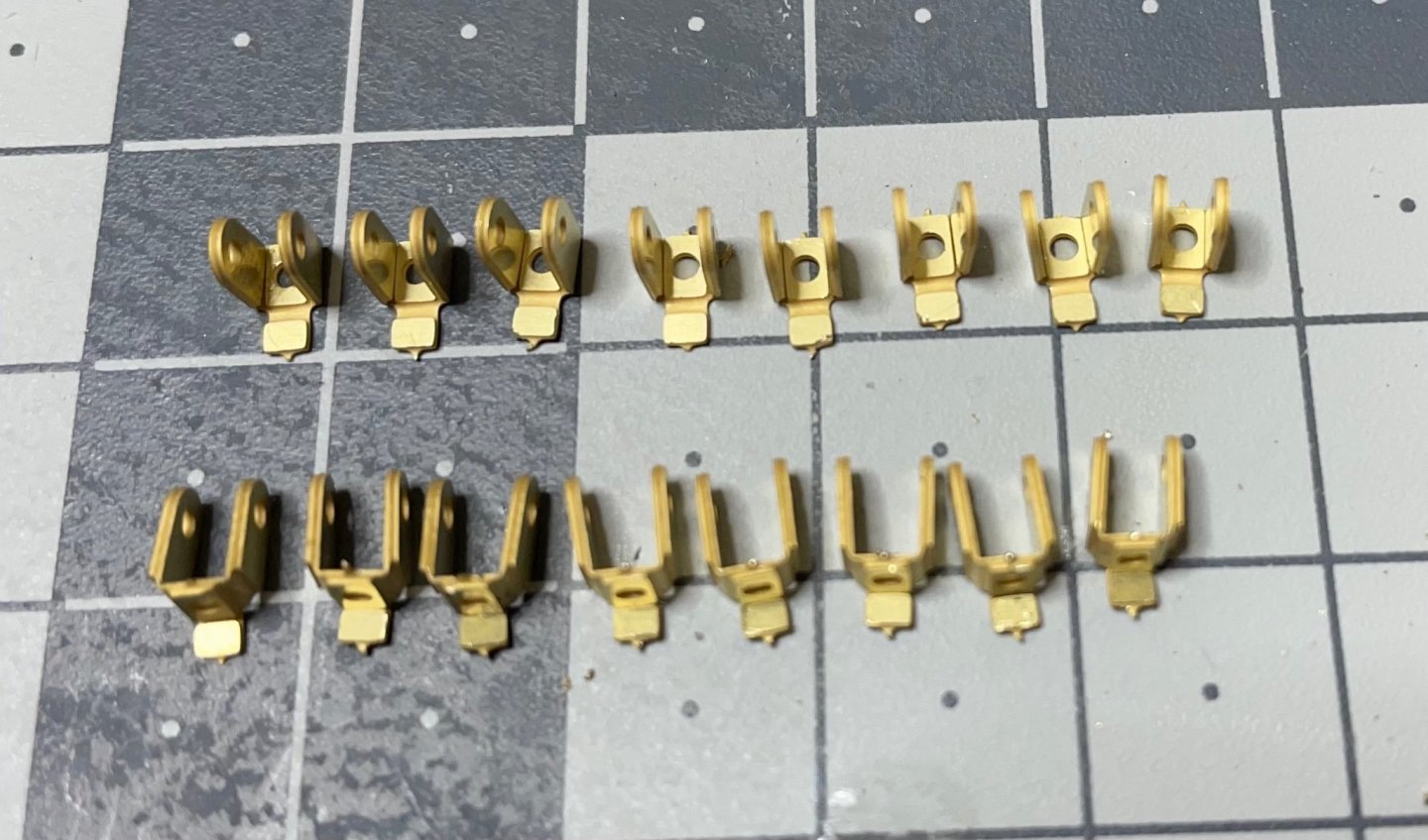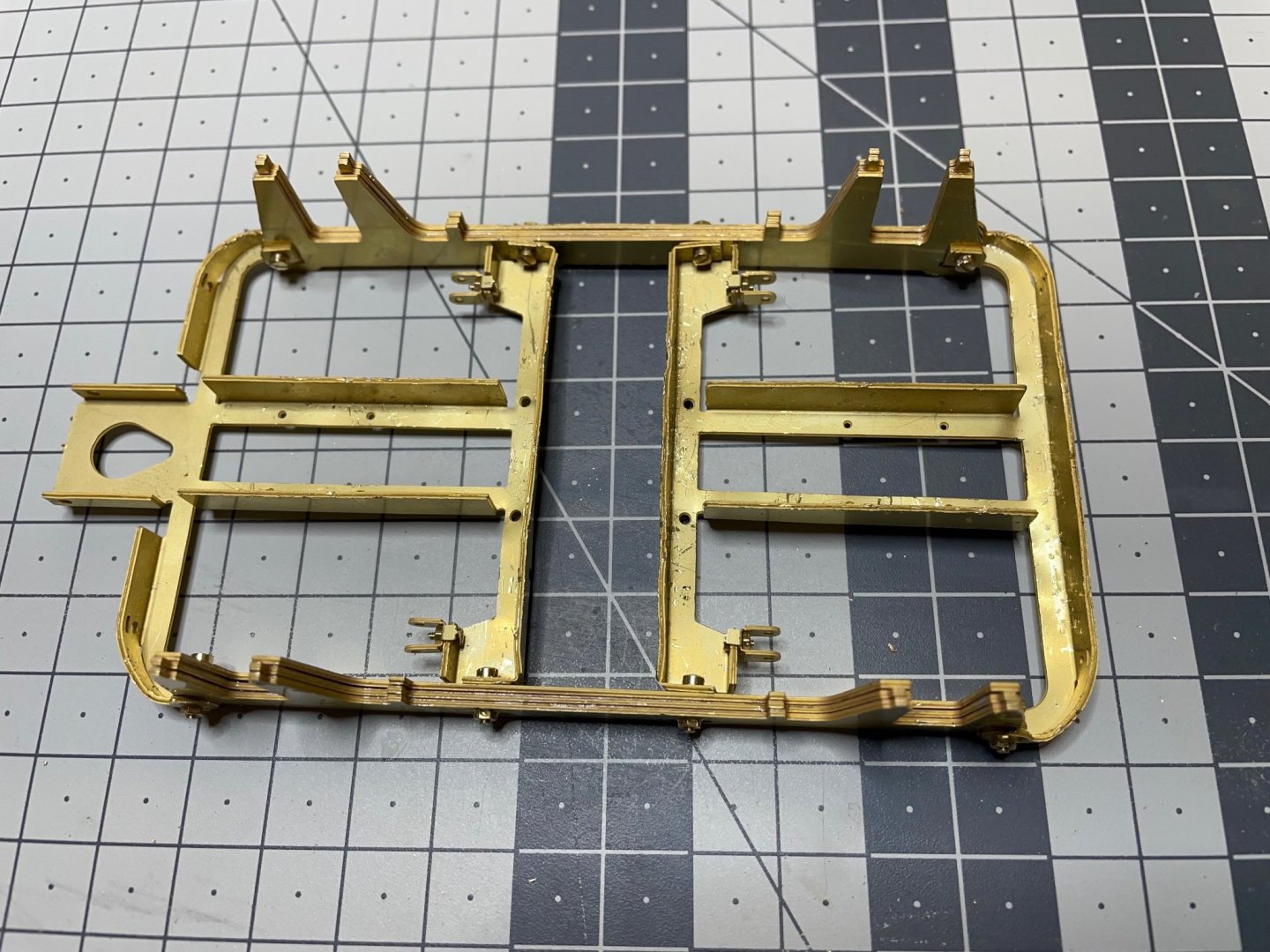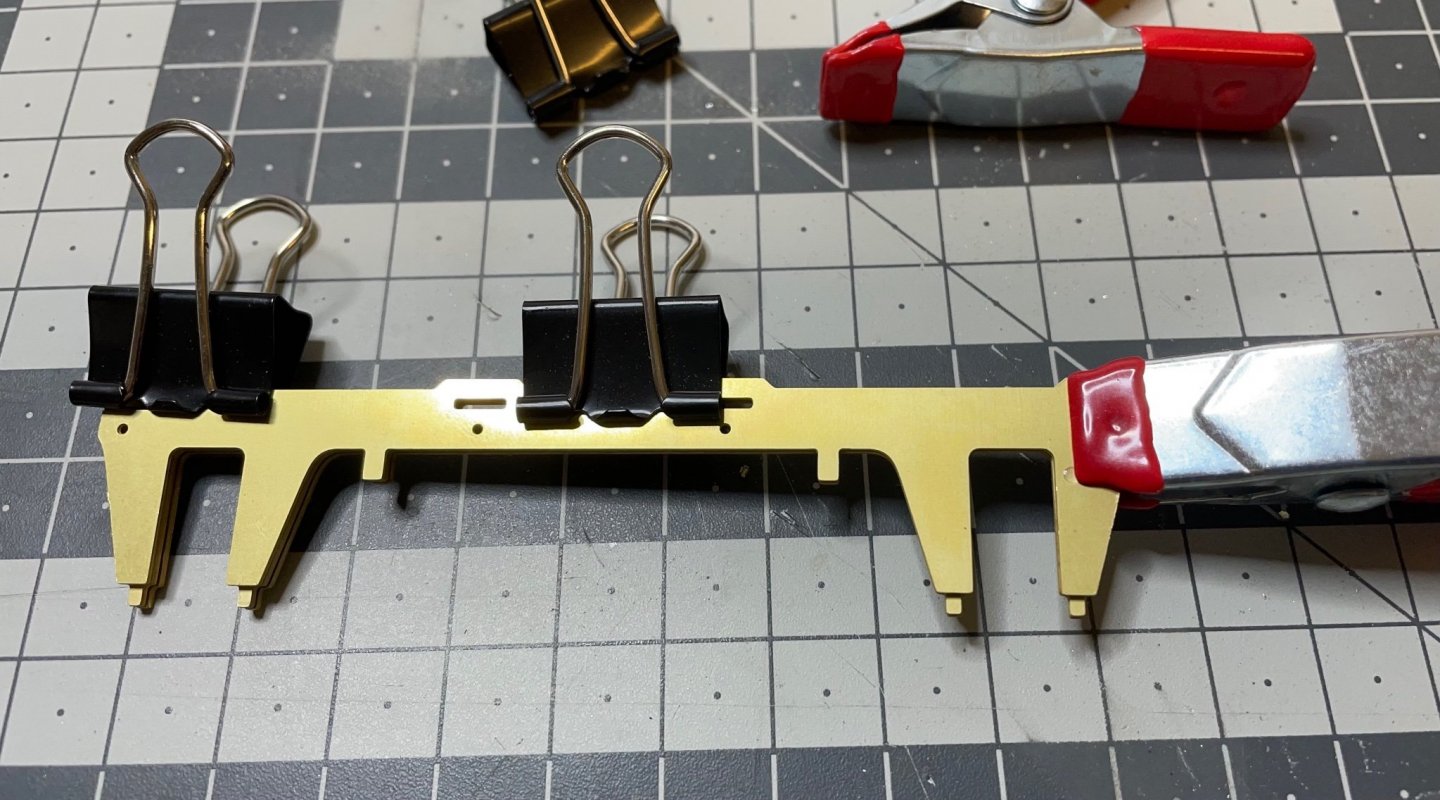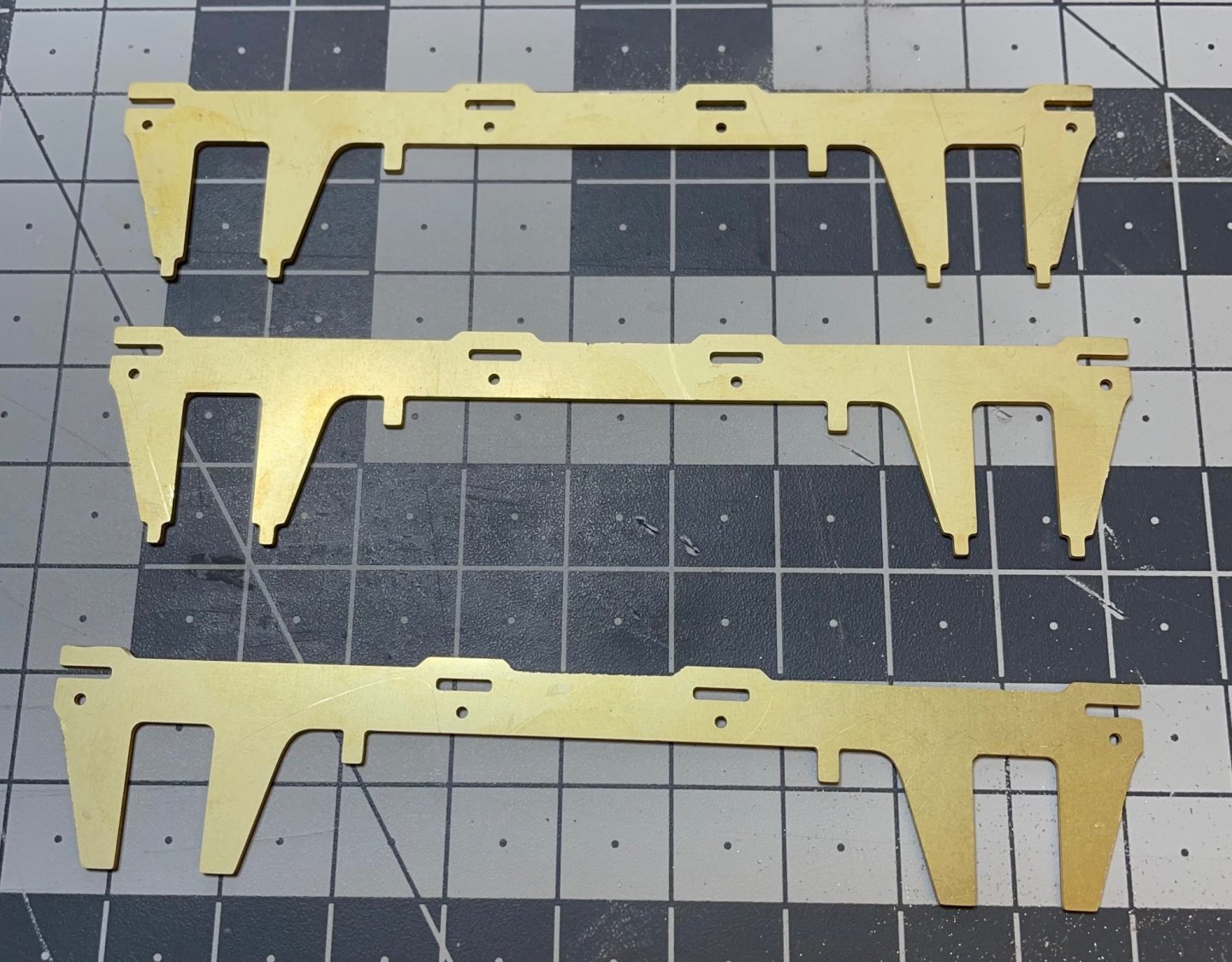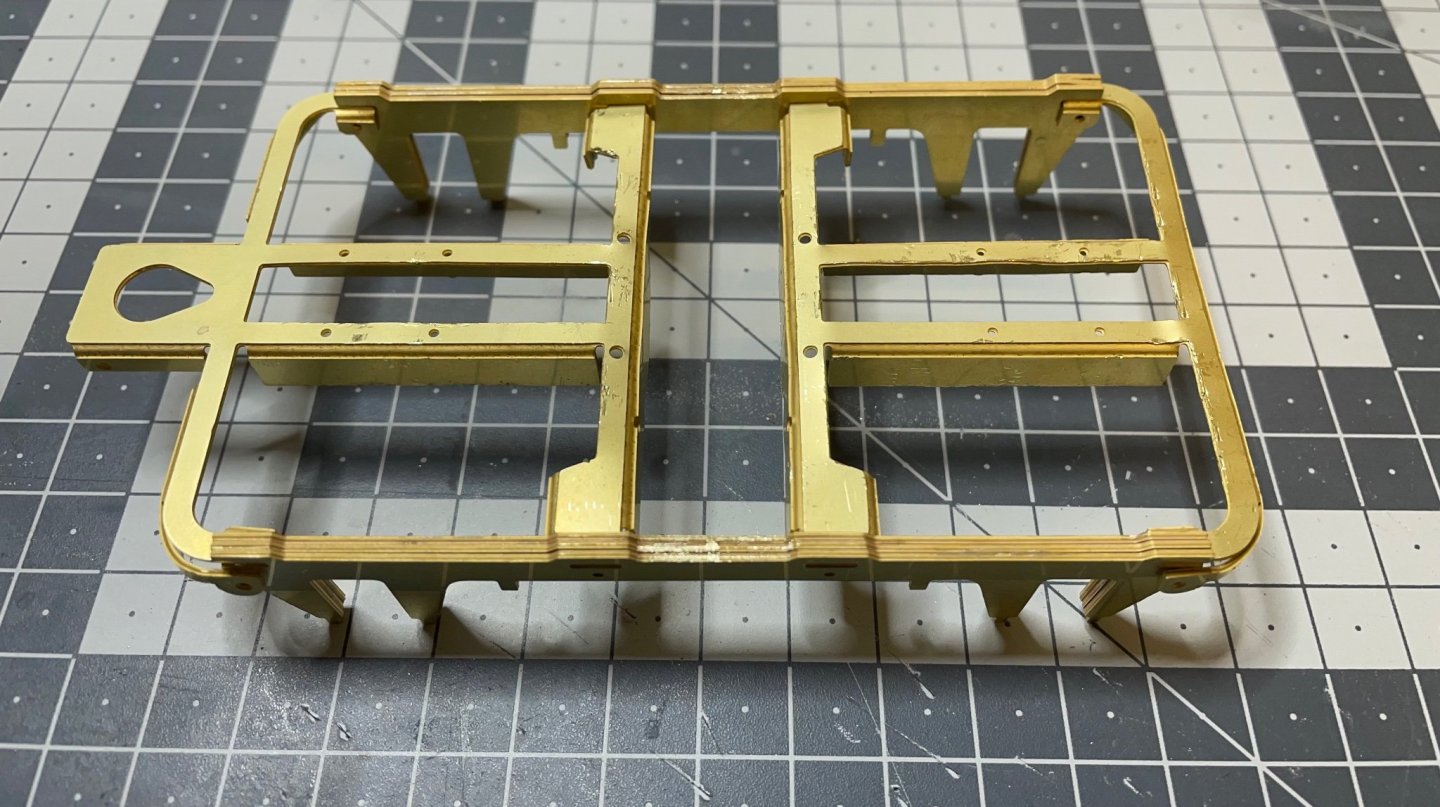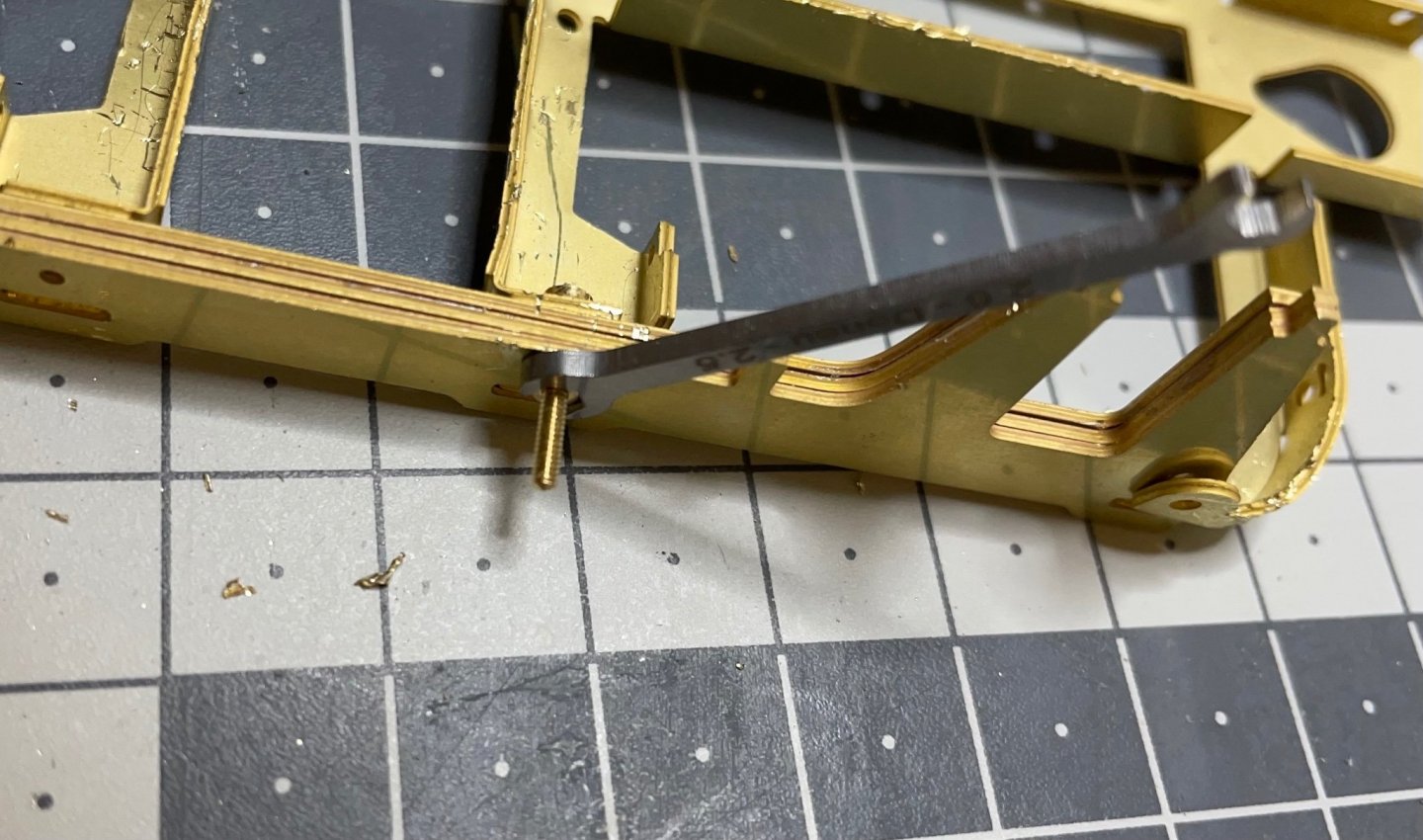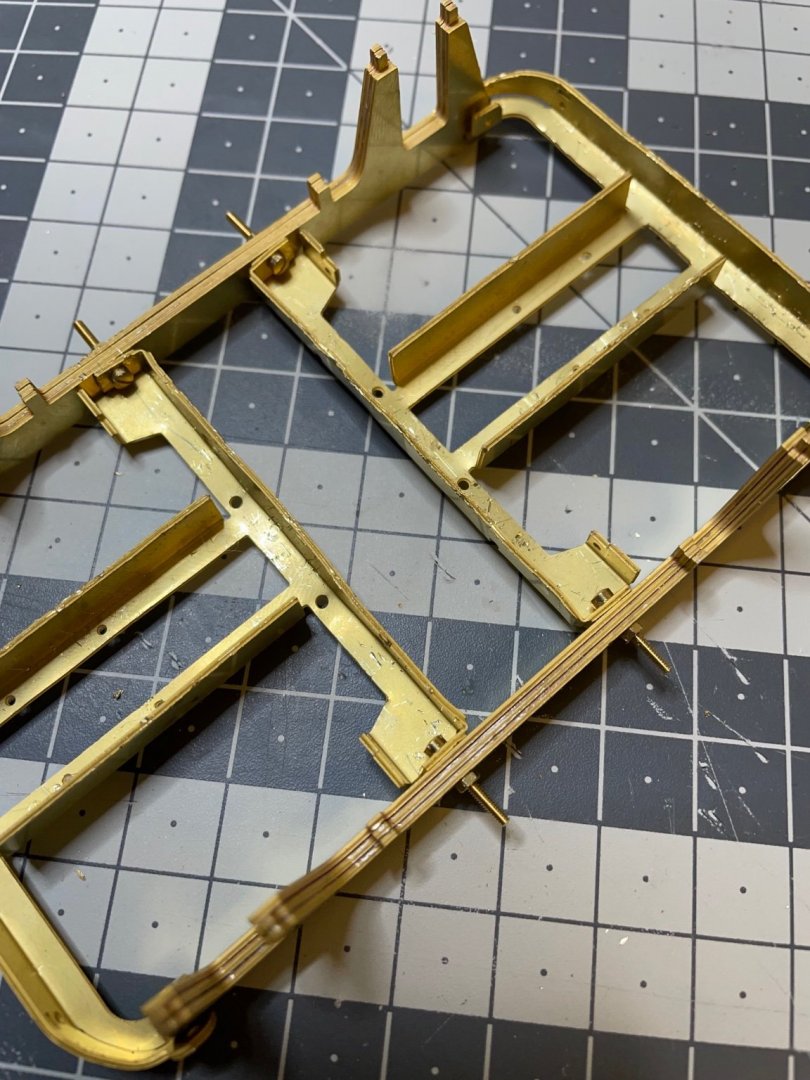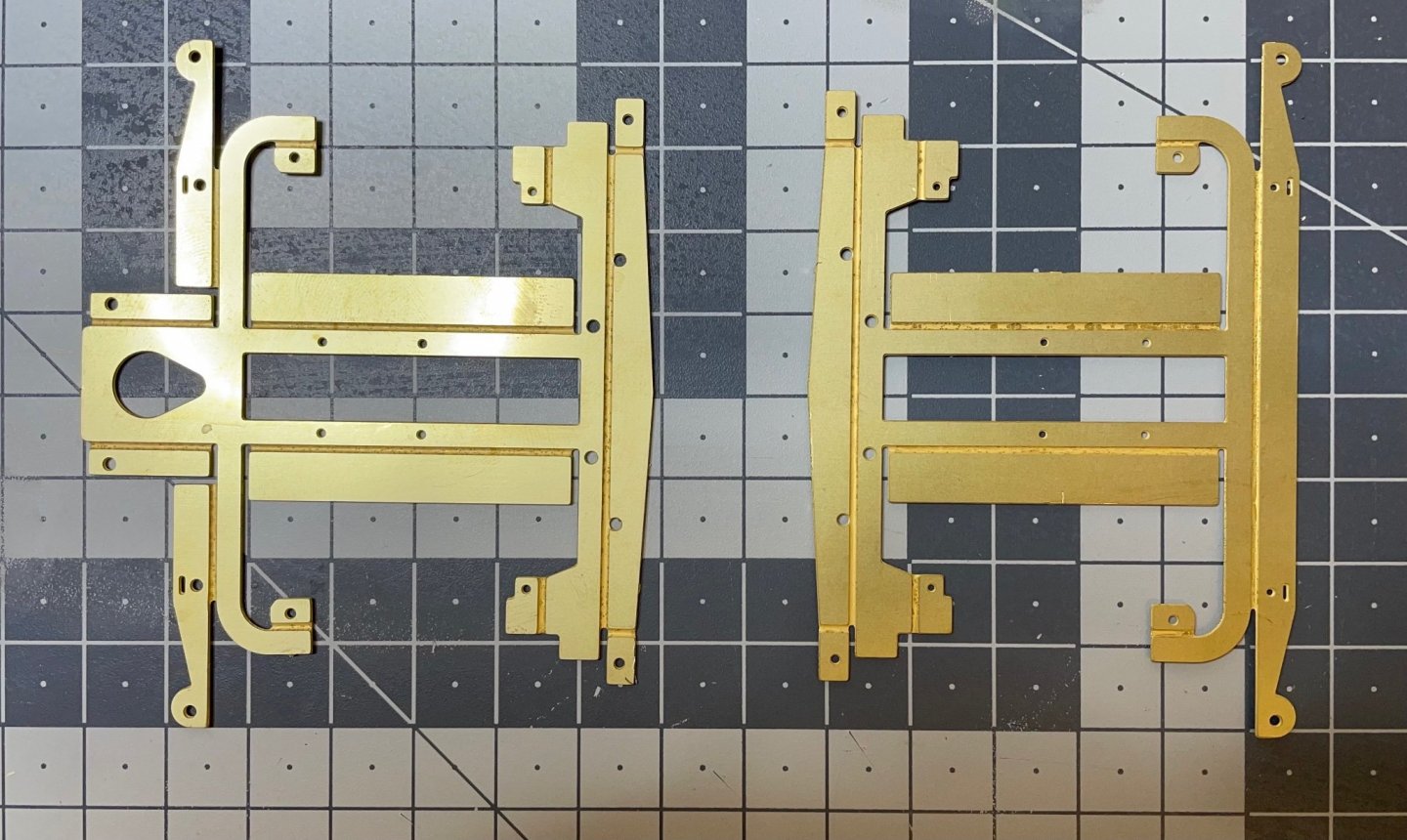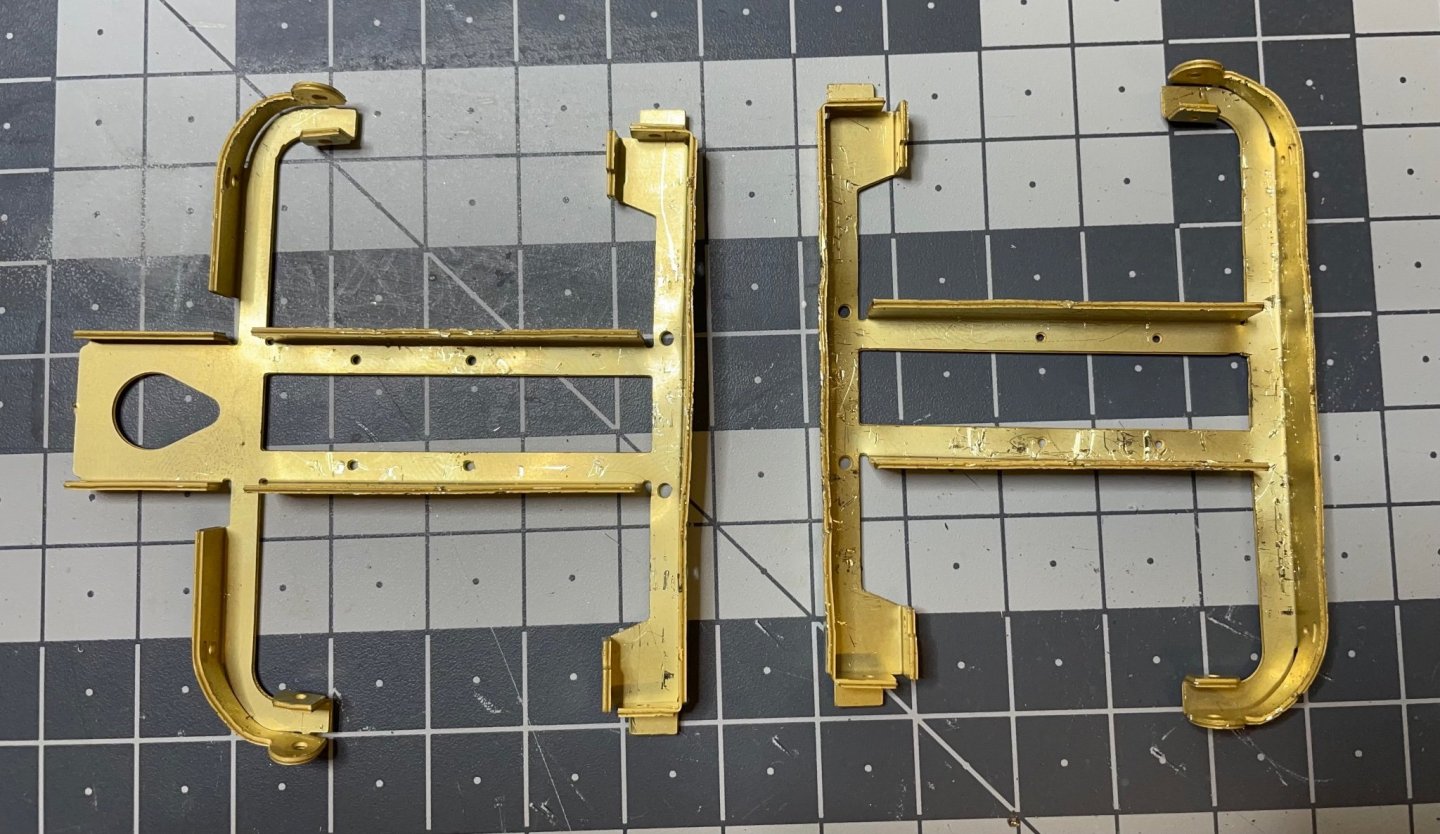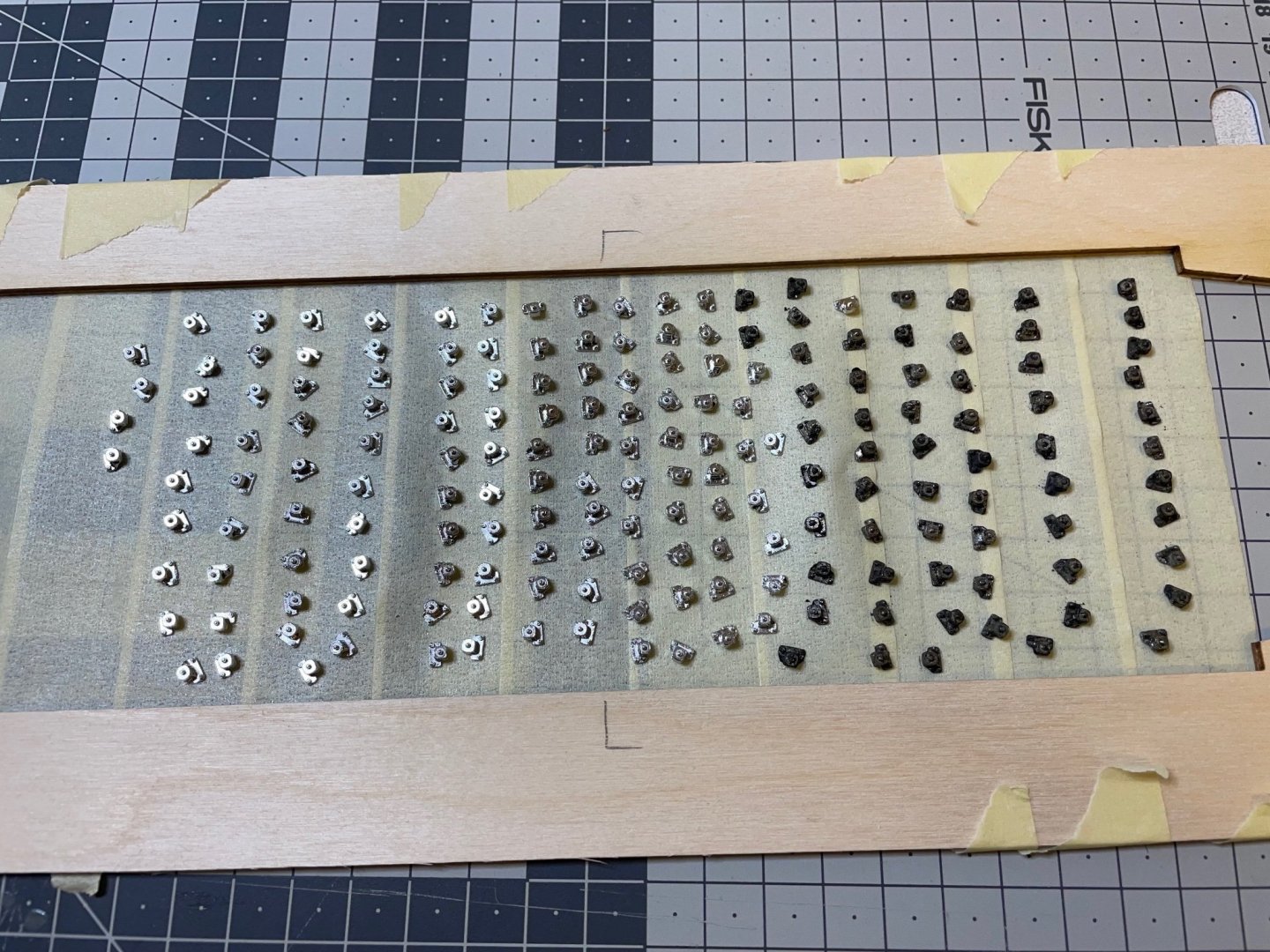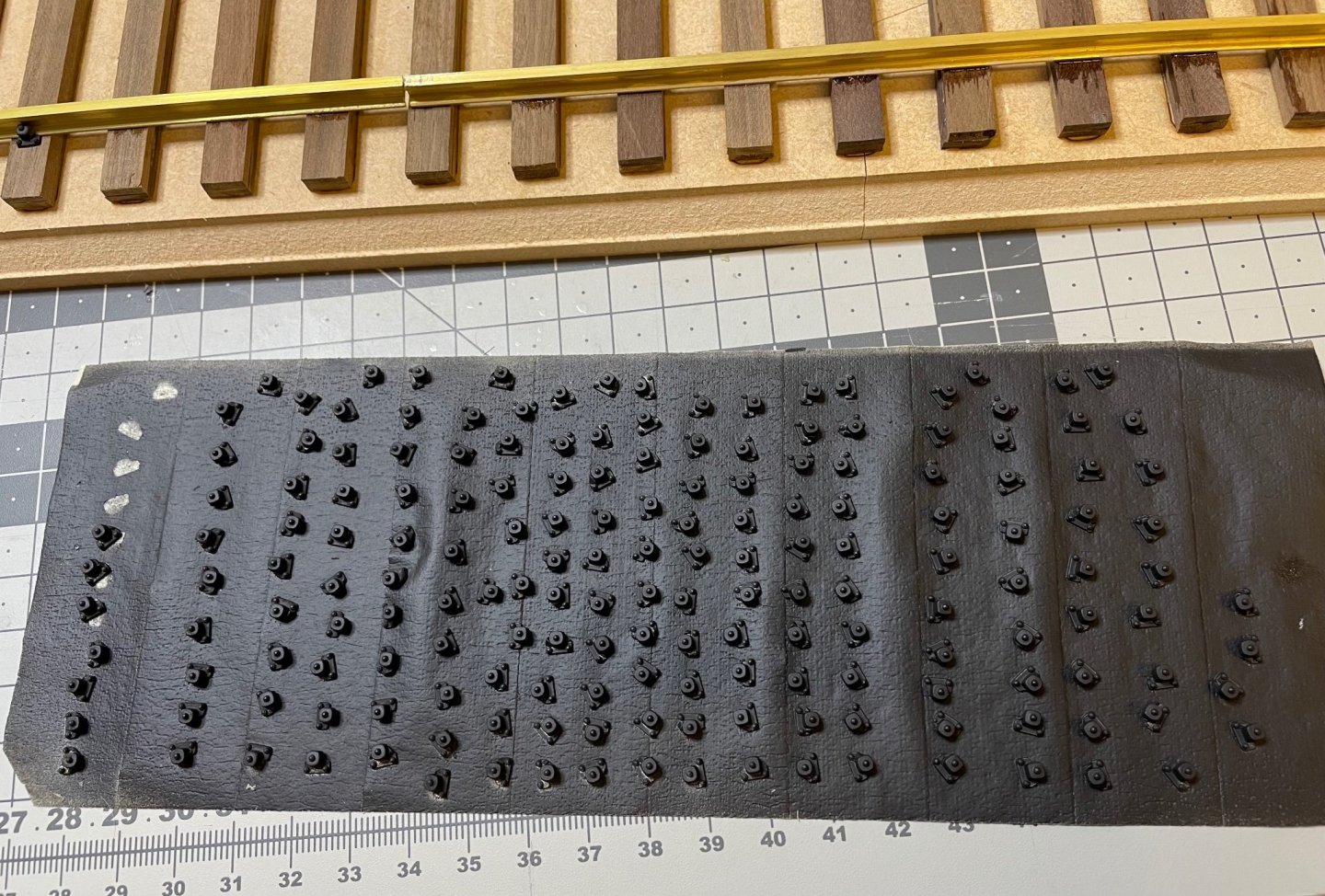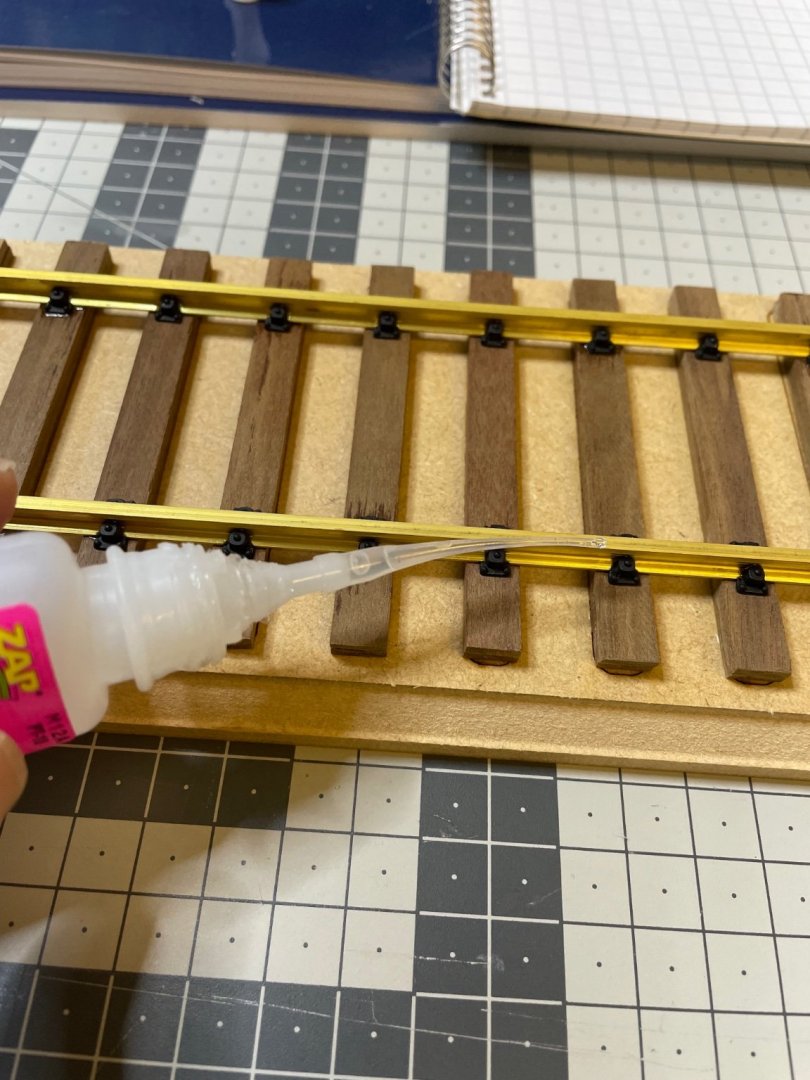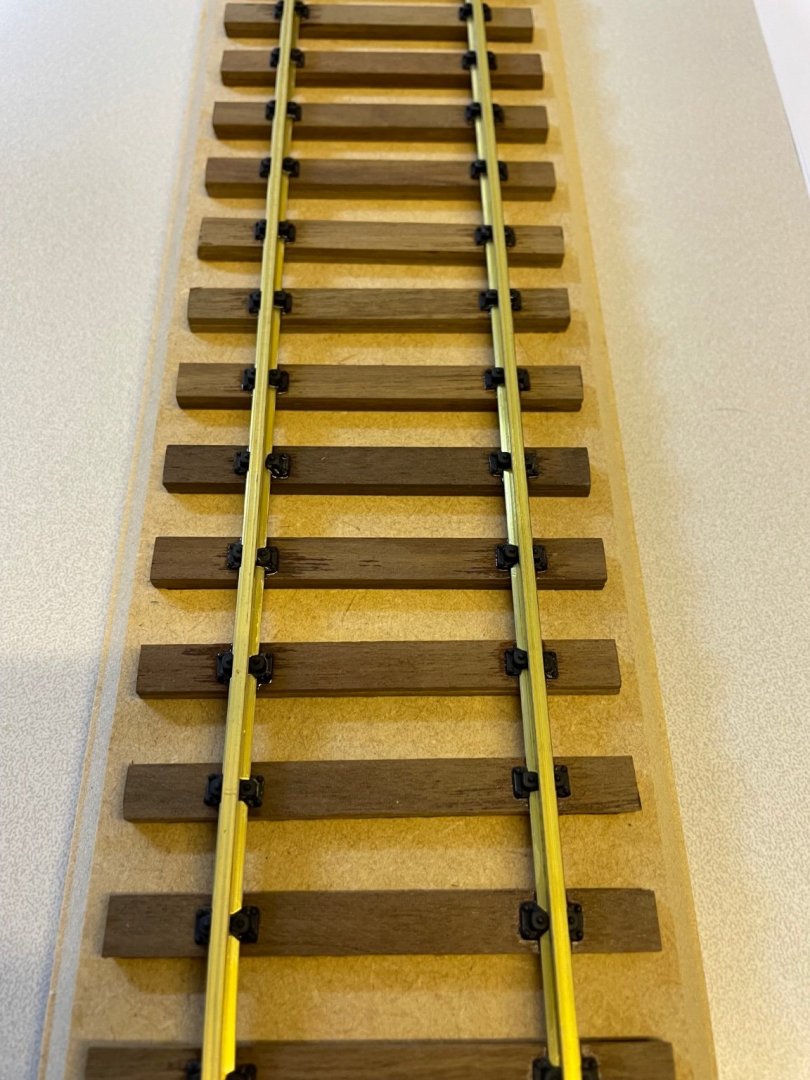-
Posts
916 -
Joined
-
Last visited
Content Type
Profiles
Forums
Gallery
Events
Everything posted by aydingocer
-
A good news today is from Amati. They have just dispatched the missing part from the box. It is a brass L profile for the sides of the body structure. Because of the lack of it I couldn’t proceed as planned, I had switched to building the bogies in the meantime. Now the bogies are almost ready and the package should arrive sometime next week, just in time to resume the body work. Thanks Amati.
-
Thanks for the good tip, Yves! I will actually go through the entire painting details on the bogies once they are fully ready. There are many unpainted small parts as well as scratches caused by using tools. I’ll keep your points in mind then. I use acrylic paint hence removing it off the metal surface should not be a big deal, hopefully.
-
Figure 111: First brake shoe installed. When installed it swings freely on the bolt. I used superglue to fix it in position, just as close and parallel to the wheel. The brake shoes on the outer side are rather easy to install. However those on the inner parts are very very tricky to even fit at first place, let alone insert the bolt, tighten the nut and glue to the right position. My recommendation to a builder reading these pages would be to consider installing the brake shoes before installing the wheels. That's all for today! Thanks for watching!
-
Figure 107: Wheels dry fit. The wheels are not supposed to be glued. They should rotate freely and independently. The rod will stay still. This is needed especially for the rod above, which is connected to the dynamo via a brass belt. I see some build videos in Youtube gluing everything to the wheels including the brake shoes (to come later in this log). Such approach is only for in case you are absolutely sure you are building a fully static version, in which the wheels will not move!
-
Installation of the dynamo. This part is only on one of the frames. Figure 91: Dynamo is installed using 2 bolts and nuts, which need to be shortened to size (10mm and 7,5mm) and must fit in the dynamo. Well, except once again they don't. Hence, drill. 🤣 Figures 92-98: Showing the process of dynamo installation. That's all for today! Thanks for watching!
-
Figure 87: The so called "struts" and springs. This will be the structure where the wheels will sit on, later. Figure 88: Painted in matt black as usual The springs consist of 3 parts to be glued together. But I choose a bit different order than in the instructions, to ensure accurate alignment: - First I glued the two parts which will be on the side of the struts (like in Figure 89 below), - Then screwed them to the struts - Inserted the 3rd part of the spring structure to the frame - Finally placed the struts on top od that 3rd part. Figure 89: Figure 90: Now everything looks perfectly aligned.
-
More photos on the assembly process. Figure 82: Dry fit on the springs, for aligning the small parts on the left side of the picture, to be glued on either side of the brass component. Figure 83: More drilling. The holes are simply too small. They are almost there only for a reference of the correct location :).
-
BUILD DAY 6: 3 hrs (TOTAL: 20,5 hrs) Continuing with bogies. Now the frames are ready, it is time to fill them. Note: The manual is instructing to finish one of the bogies first and then repeat the almost identical steps to build the second one. I will not follow this approach fully, nor a parallel building progress. Instead I decided to go with a "hybrid" approach. I build some pair of components at the same time where it looks more convenient and keep them aside until I build the second bogie. Next on the line is the suspension structure. There will be two of these. Figure 77: Die cast parts. Figure 78: You will need to enlarge almost every hole by drilling, in order to fit the bolts conveniently. Do not try to push/pull the bolts with pliers or other tools to pass them through the holes, their pitches will get ruined very easily and the bolt will be impossible to use. Better open a wider hole and just insert the bolt smoothly.
-
Figure 63, 64: Legs, formed of 3 pieces glued with super glue. 2 identical parts and on different. Pay attention to glue correctly. Figure 65: Legs in place. Dry fit. Figure 66: My best friend of the day. A 2,5mm miniature hex wrench. Without it, I don't know what I 'd do. Figure 67, 68: First set of fixing screws in place. They will be trimmed later.
-
BUILD DAY 5: 6,5 hrs (TOTAL: 17,5 hrs) Today I started to build the bogies. This was a 6,5 hours of blood, sweat and tears. The components come in quite thick brass sheet. I have to say that the build videos of this kit I saw on the internet about bending these parts, are like a joke. At least at my level of experience, there is no way bending them easily using just a pair of pliers and hand. I am talking about bending the long sections on the sides and "wings" in the center. Since the section you want to keep flat is much narrower than the section you want to bend, the flat part bends before the section which you actually want to bend. Then a lot of twisting, unbending, hammering... I used double pliers, hammer, thin pliers, briefly everything at hand while trying not to damage the visible side. Well, after all, I am quite happy with the result, for a first time handler of brass sheet at this scale. Figure 62: This is how we start. Figure 63: The hardest areas are bent. Never mind the small distortions. I will straighten them on the way as good as I can. Most scratches will stay under the paint and on the invisible side once they have been installed under the chassis.
-
BUILD DAY 4: 2 hrs (TOTAL: 11 hrs) Completed the railway as described in the manual. Like I wrote above, I don't know what to do with it yet. If I choose to include it in the display then I may add some pebbles etc as decoration. So far I put it aside. Figure 58: Fixings for the rails placed on the sticky side of masking tape, invisible sides down, ready for spray paint. I tried staining some of them with the brass blackener but it didn't work well. That's why they look dark. Probably because these are pressure die-cast, not brass. There are 180 of them. Figure 59: Sprayed from a can of black primer. They look good enough and just the matt tone I wanted therefore I am not going to put any additional paint on top of them. Figure 60: I work in batches of around 10. I first place them dry on their spots, then apply a tiny amount of ultra-thin superglue with a thin nozzle from the rail side. It penetrates instantly between the part and the rail and bonds right away. Saves a lot of time compared to gluing and placing each piece one by one. Figure 61: Railway ready. That's all for today! Thanks for watching!
About us
Modelshipworld - Advancing Ship Modeling through Research
SSL Secured
Your security is important for us so this Website is SSL-Secured
NRG Mailing Address
Nautical Research Guild
237 South Lincoln Street
Westmont IL, 60559-1917
Model Ship World ® and the MSW logo are Registered Trademarks, and belong to the Nautical Research Guild (United States Patent and Trademark Office: No. 6,929,264 & No. 6,929,274, registered Dec. 20, 2022)
Helpful Links
About the NRG
If you enjoy building ship models that are historically accurate as well as beautiful, then The Nautical Research Guild (NRG) is just right for you.
The Guild is a non-profit educational organization whose mission is to “Advance Ship Modeling Through Research”. We provide support to our members in their efforts to raise the quality of their model ships.
The Nautical Research Guild has published our world-renowned quarterly magazine, The Nautical Research Journal, since 1955. The pages of the Journal are full of articles by accomplished ship modelers who show you how they create those exquisite details on their models, and by maritime historians who show you the correct details to build. The Journal is available in both print and digital editions. Go to the NRG web site (www.thenrg.org) to download a complimentary digital copy of the Journal. The NRG also publishes plan sets, books and compilations of back issues of the Journal and the former Ships in Scale and Model Ship Builder magazines.



